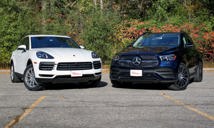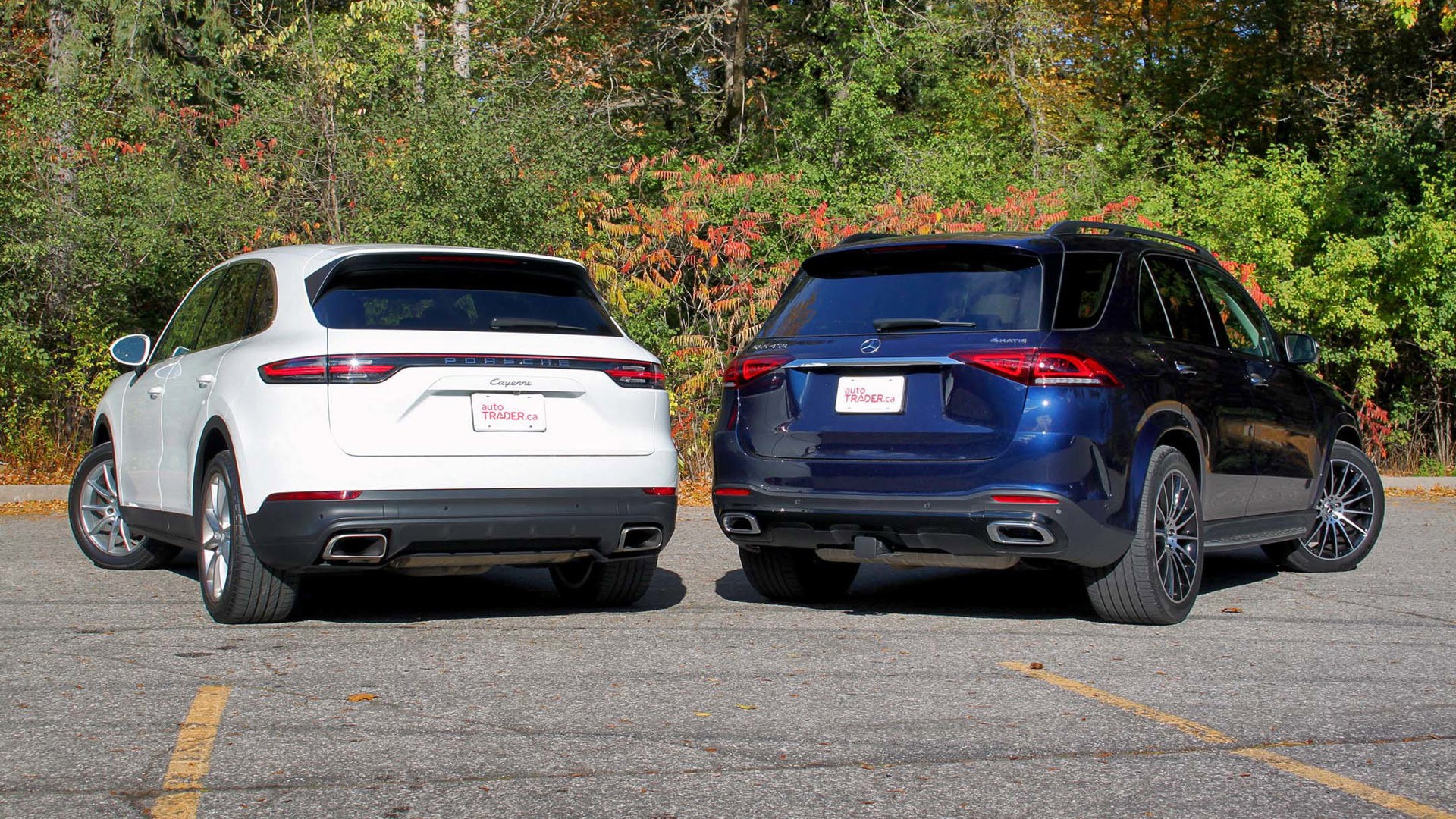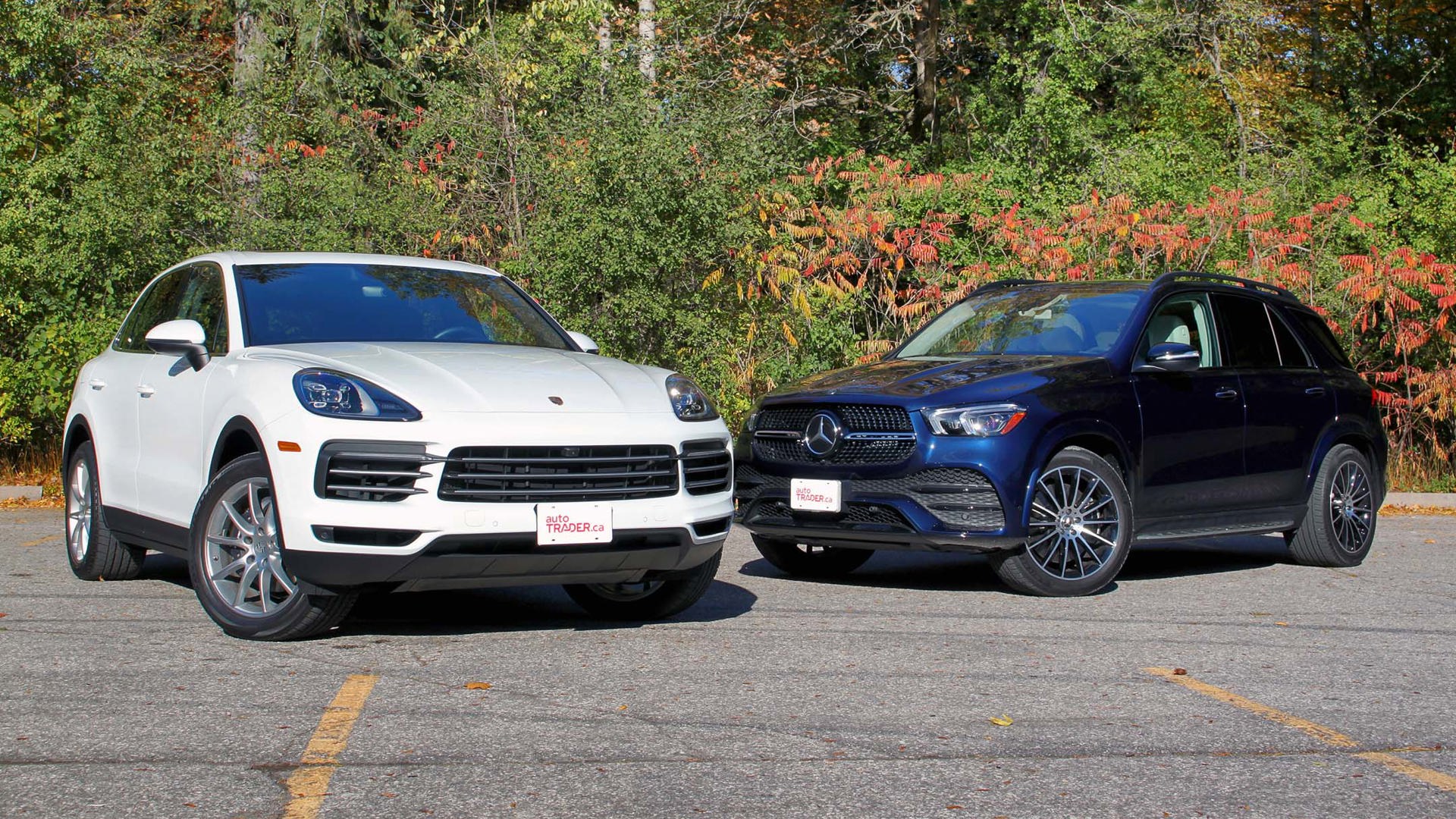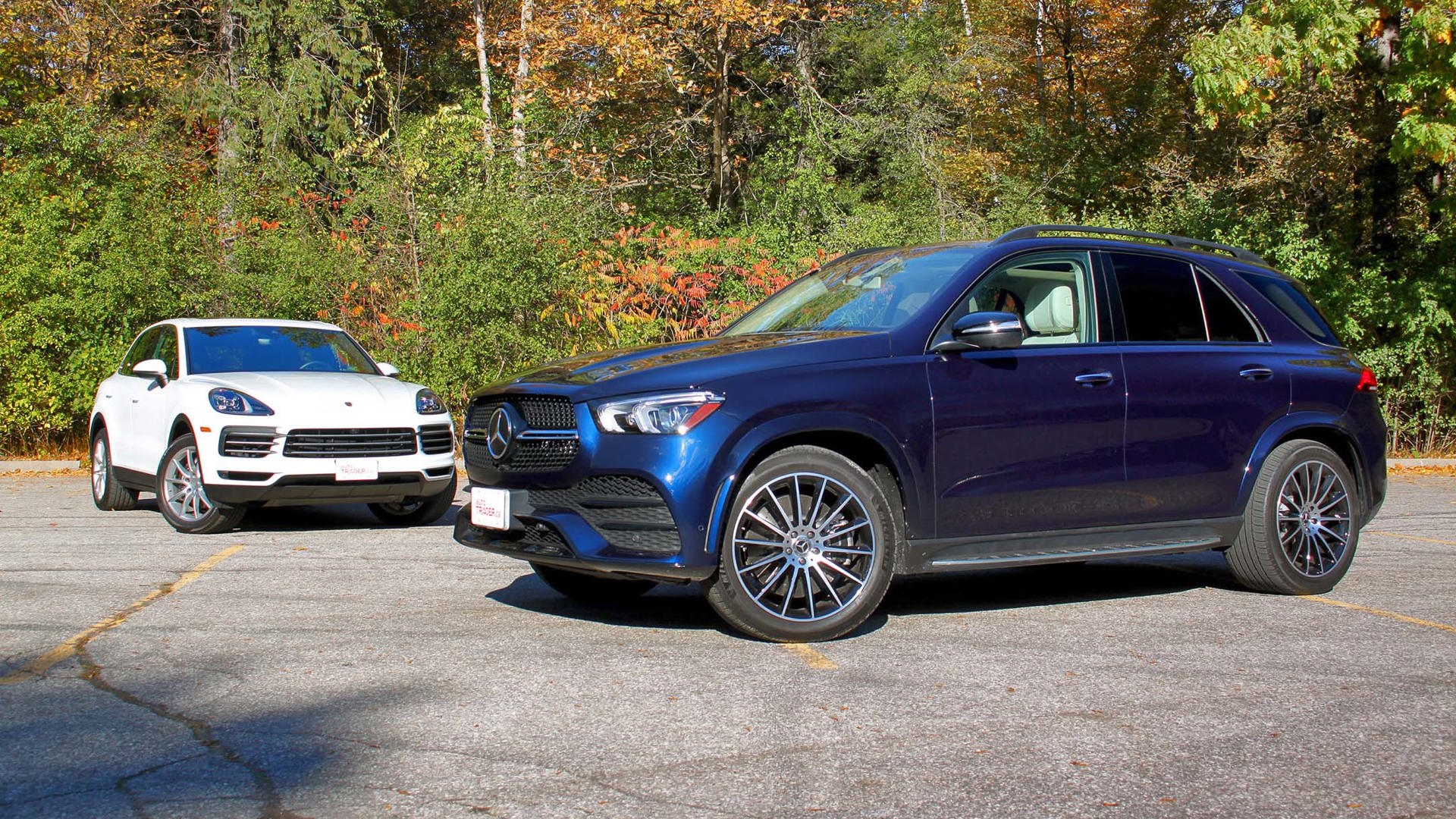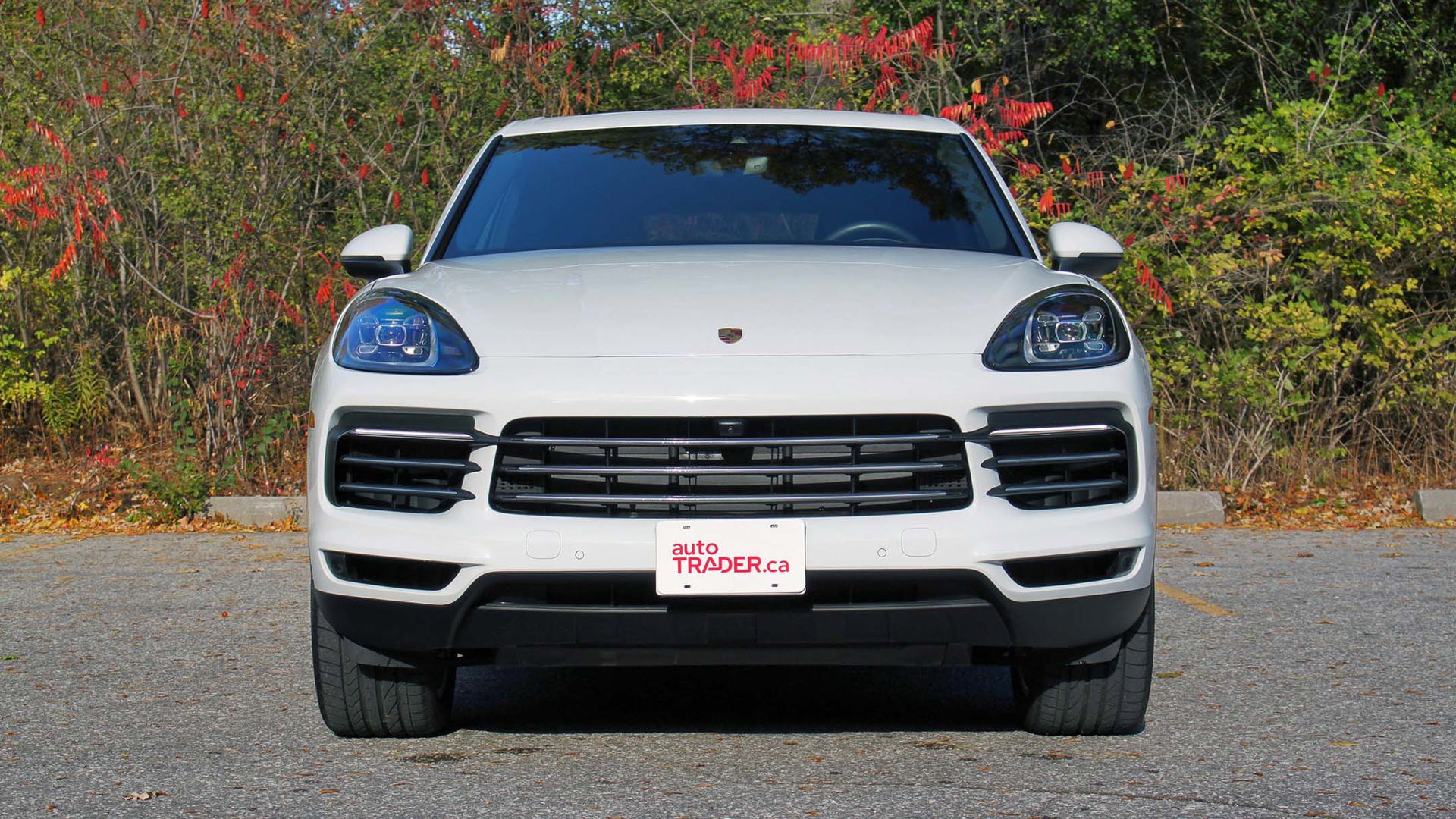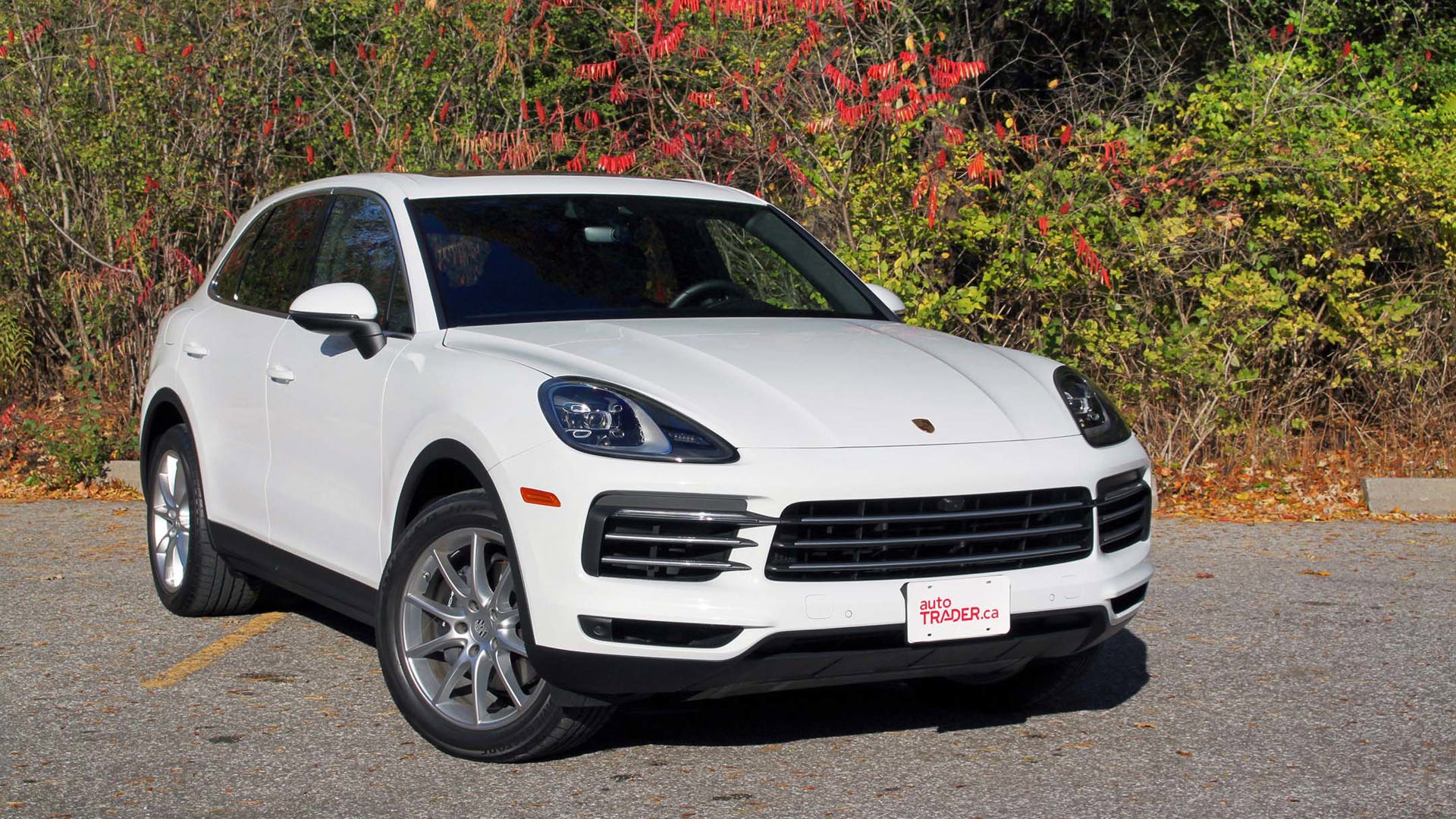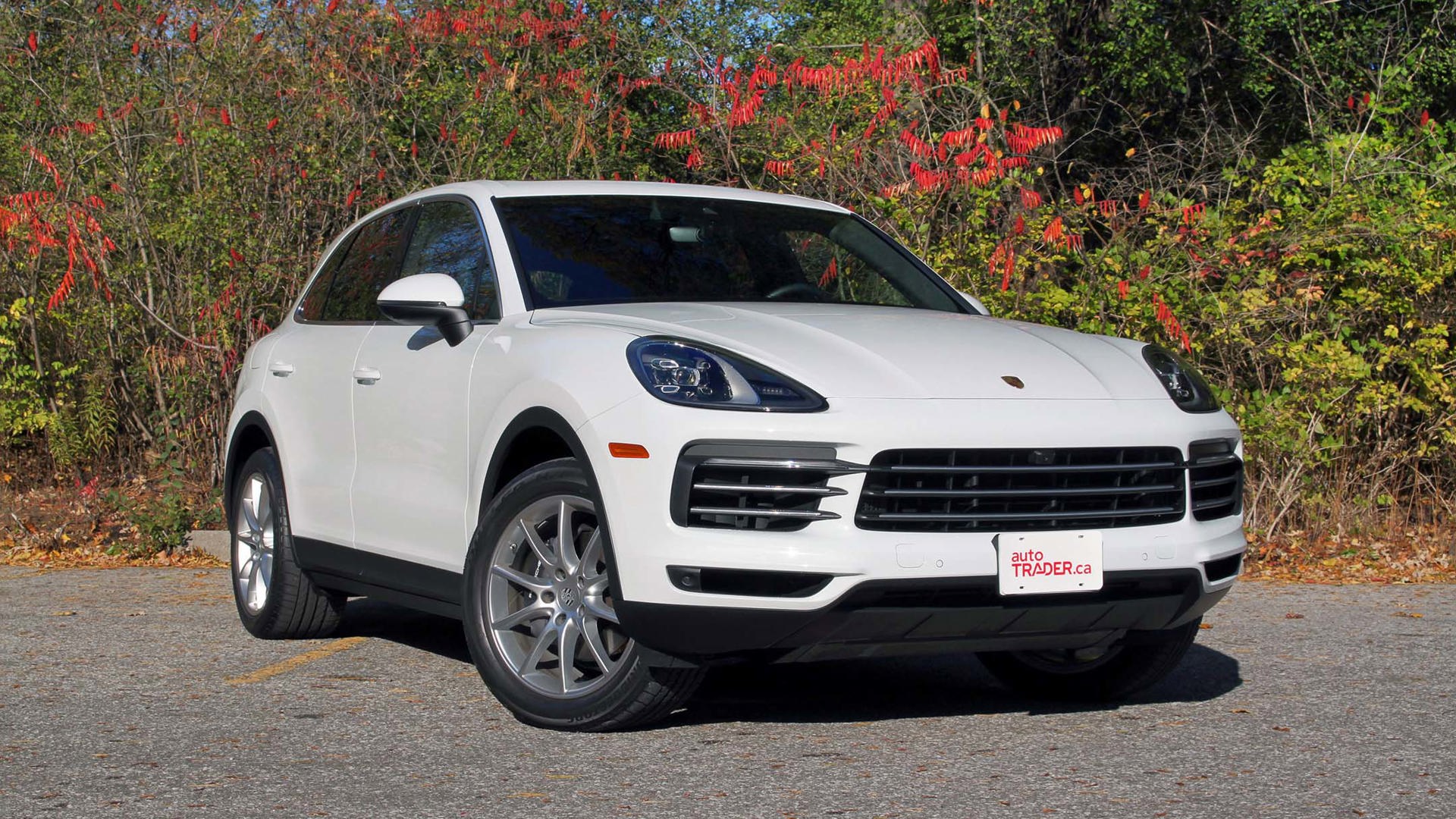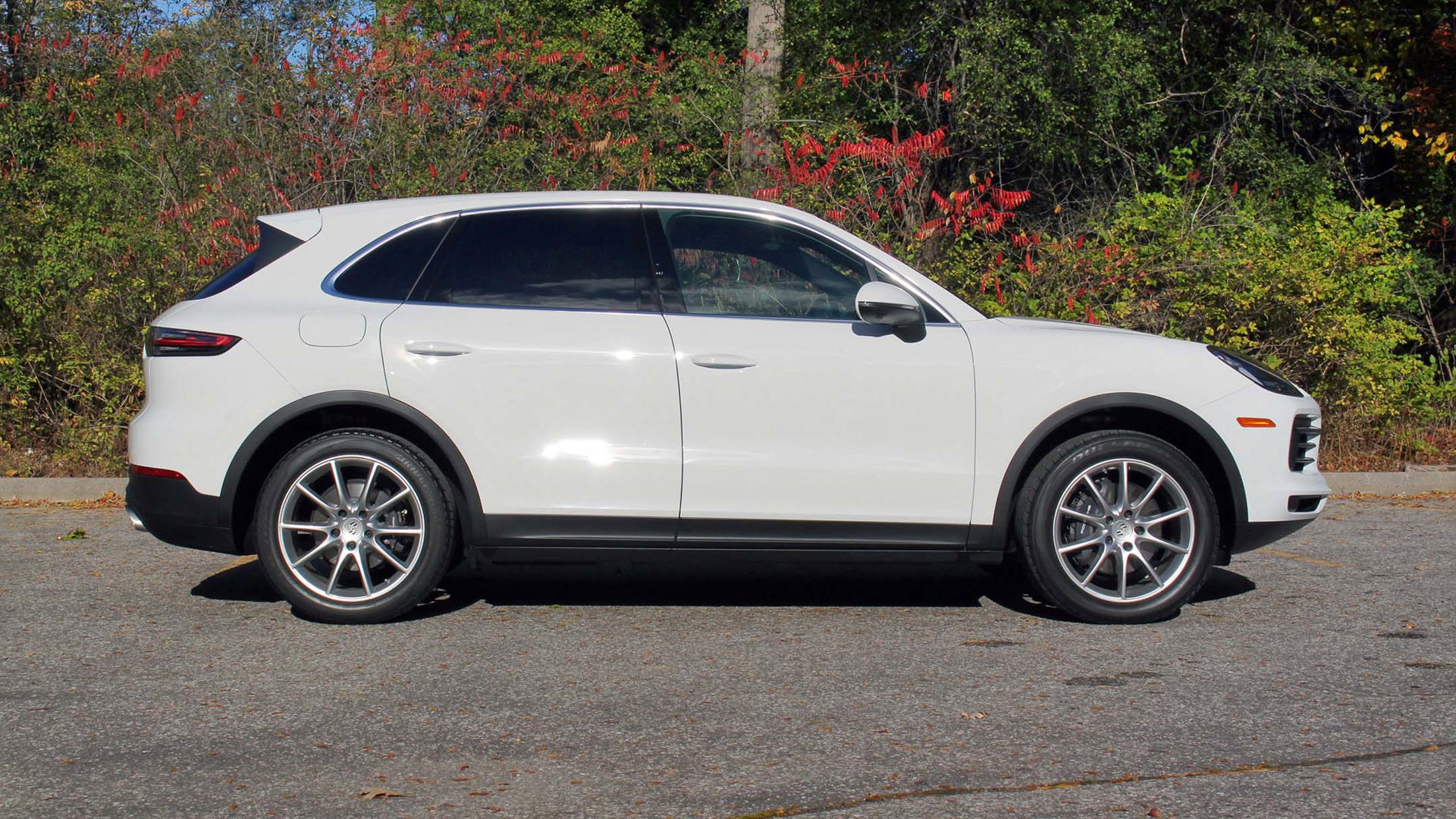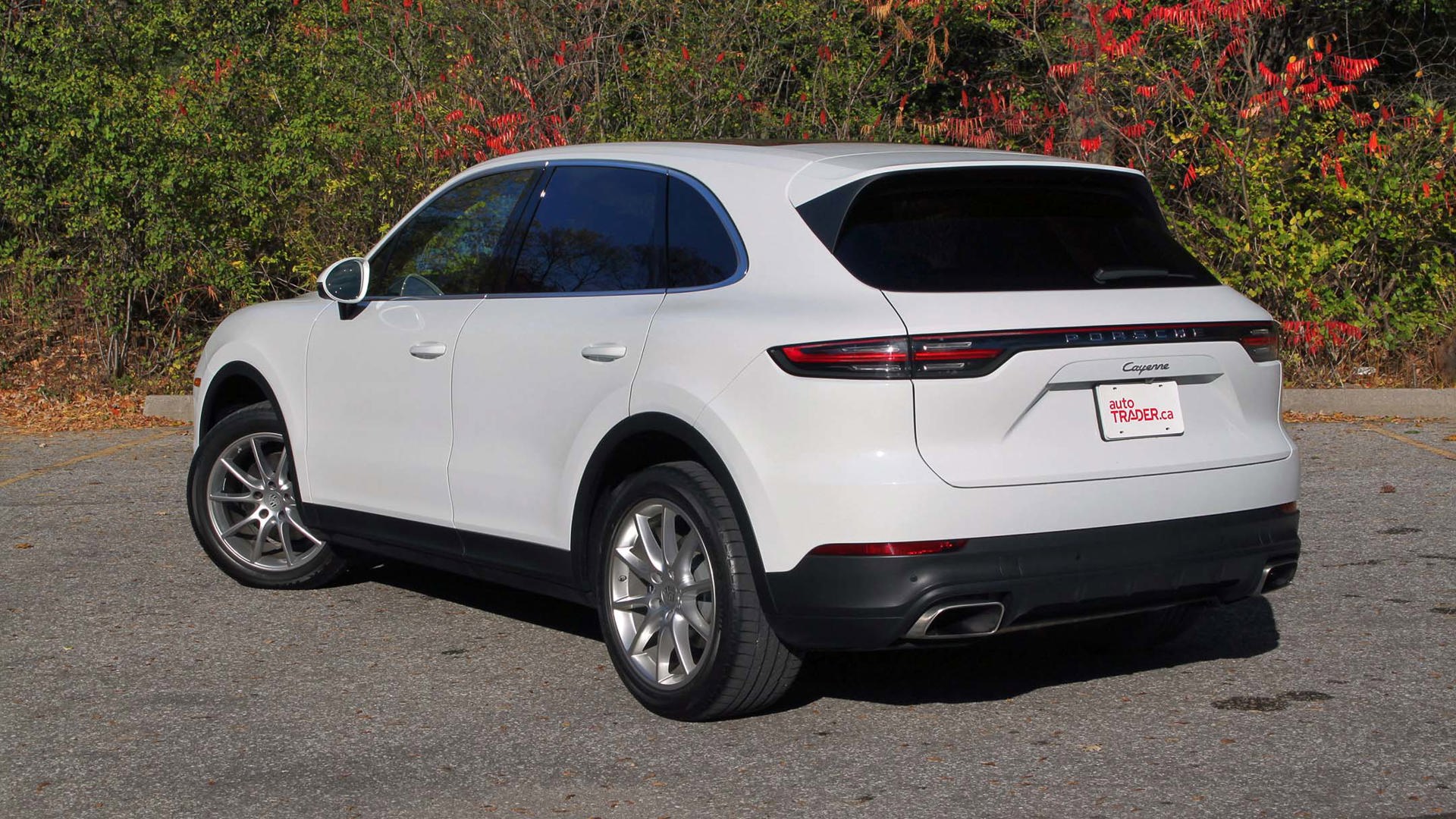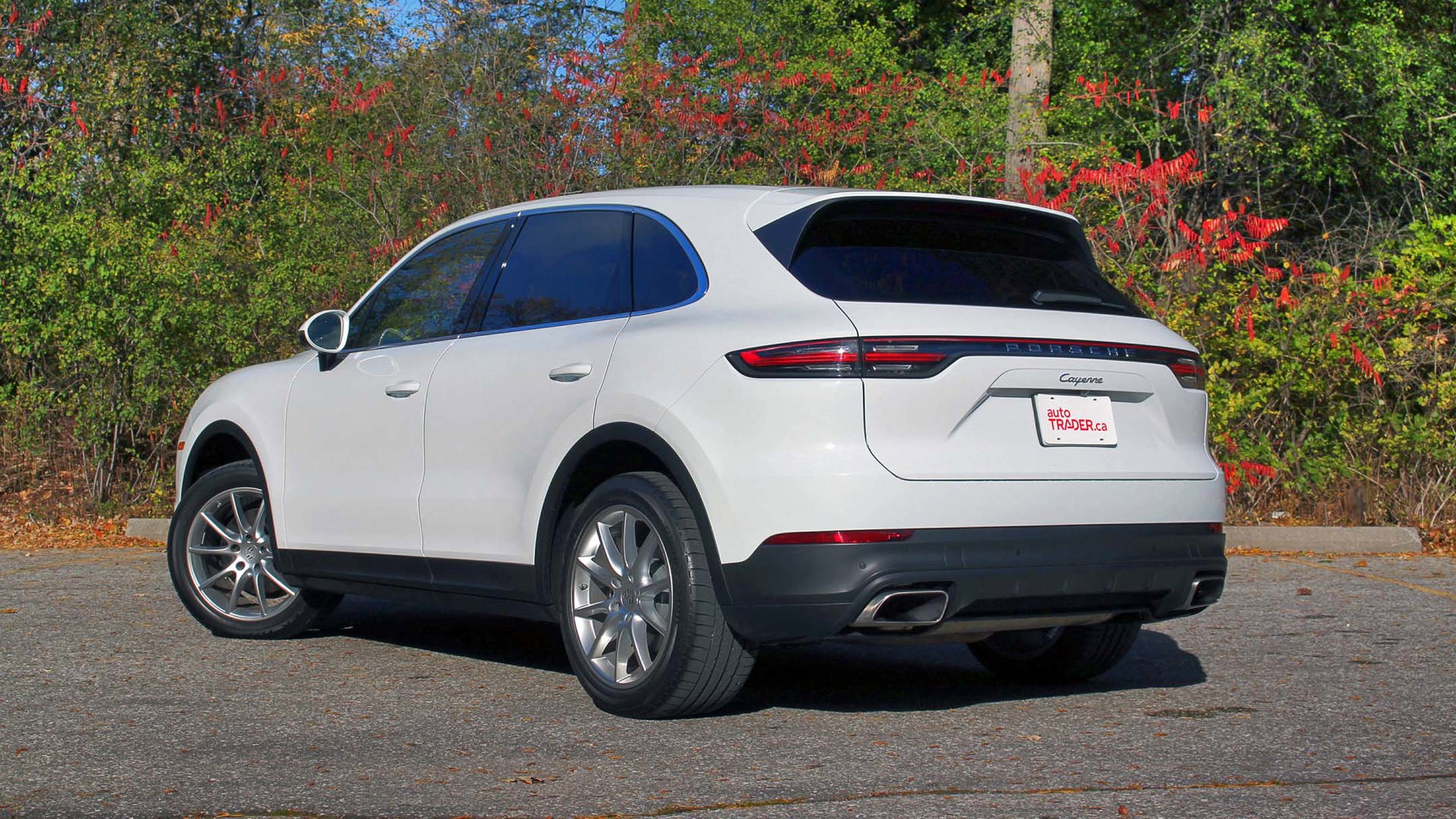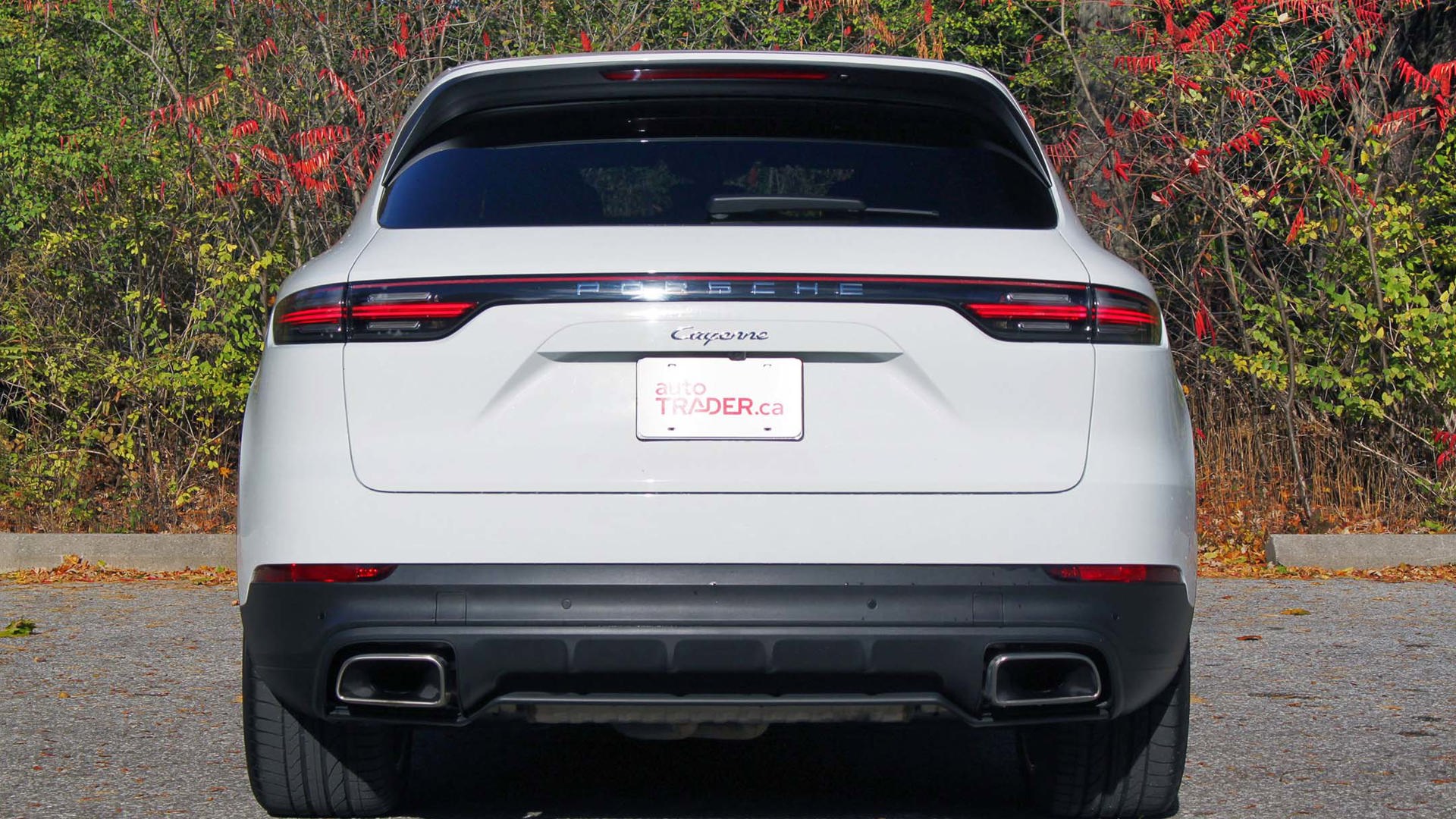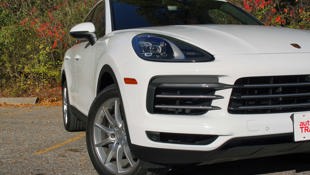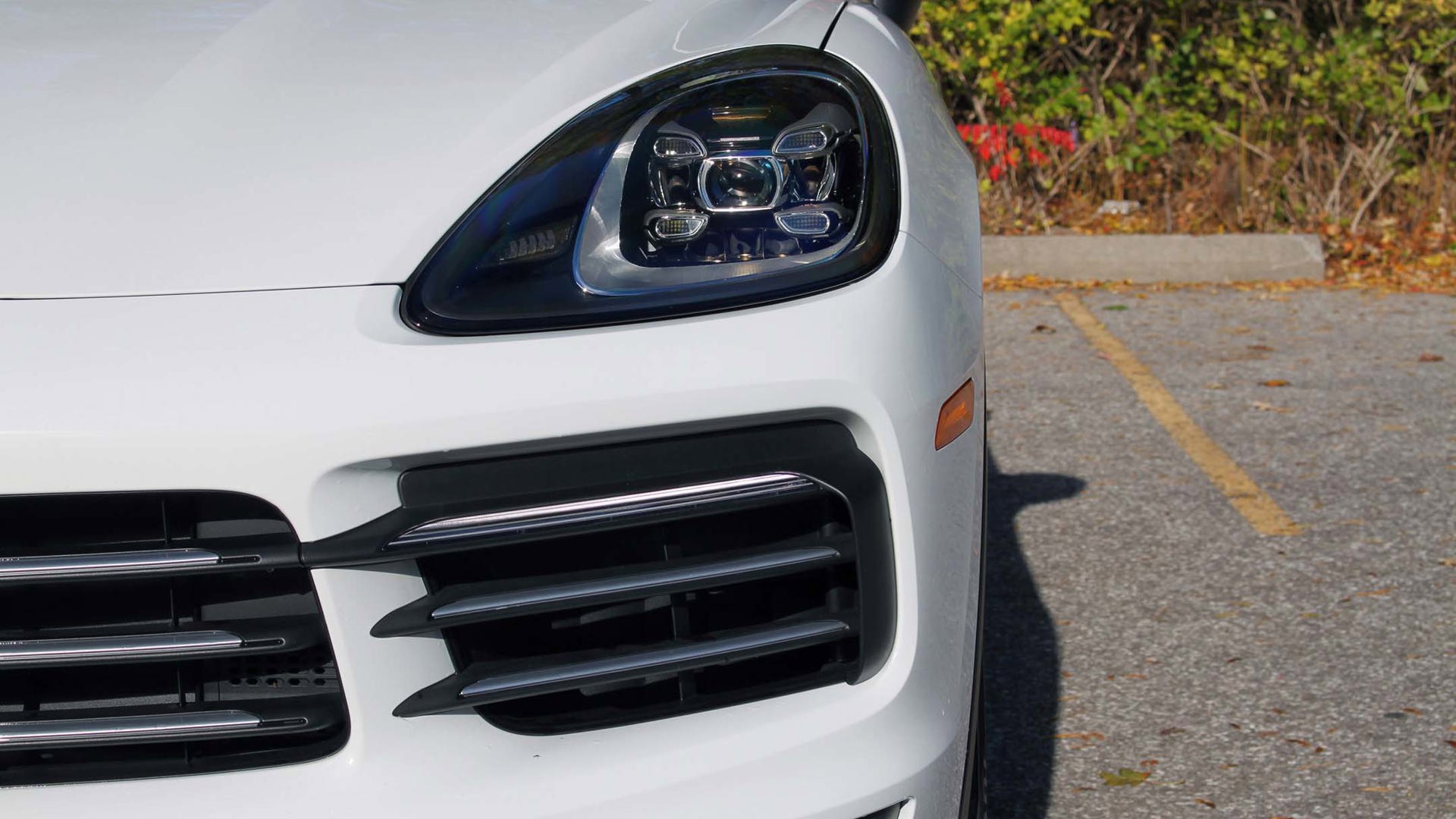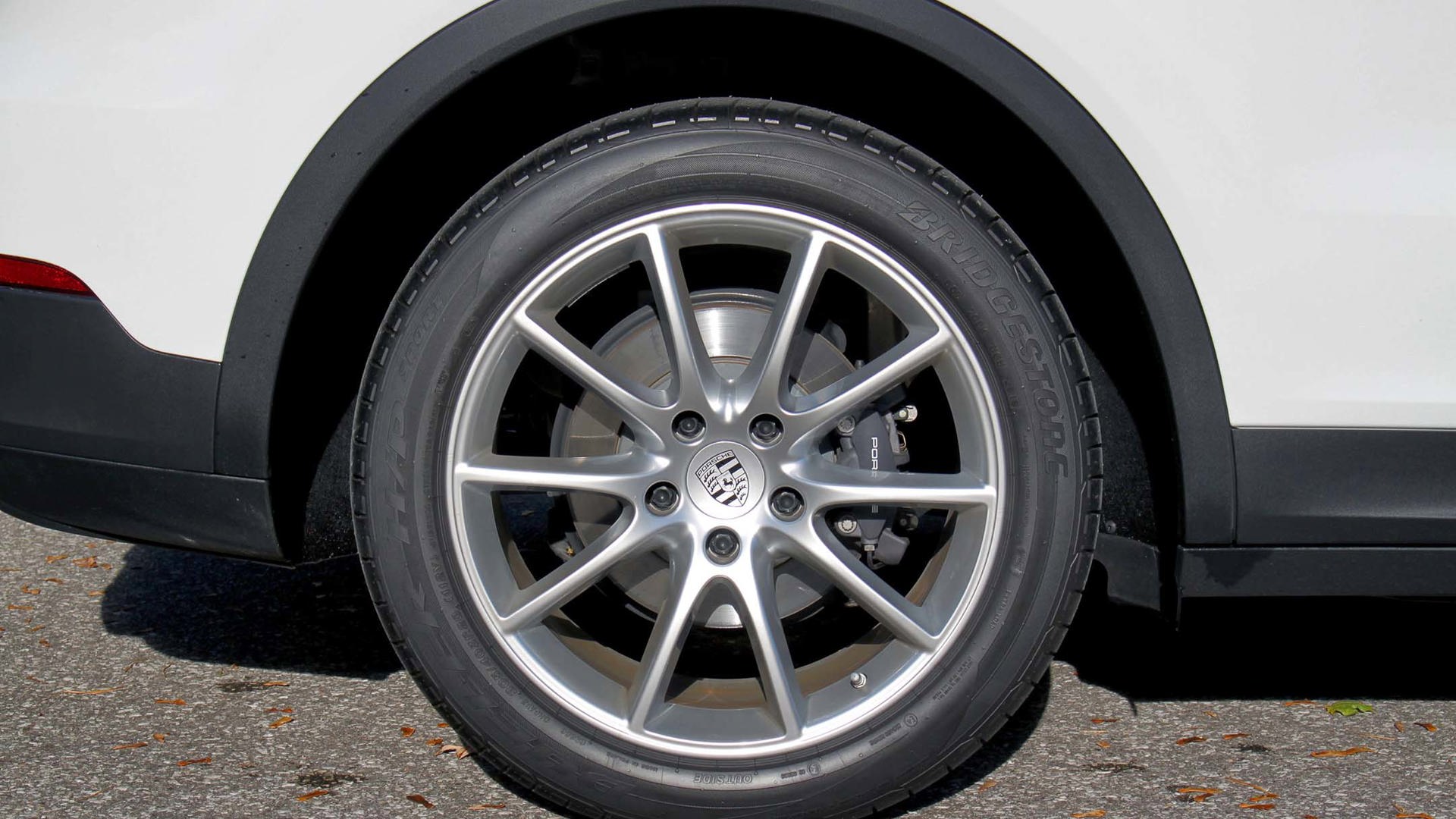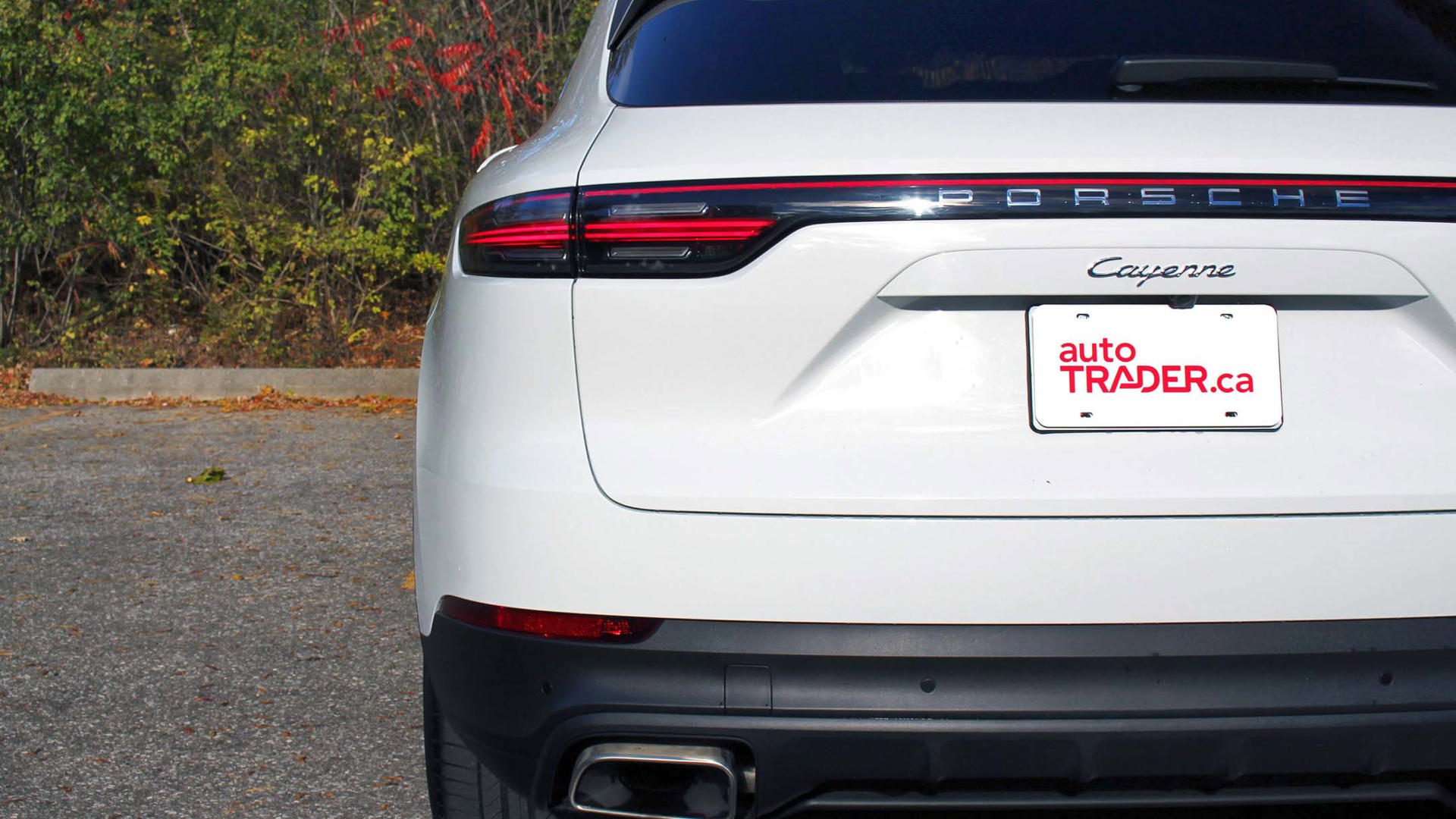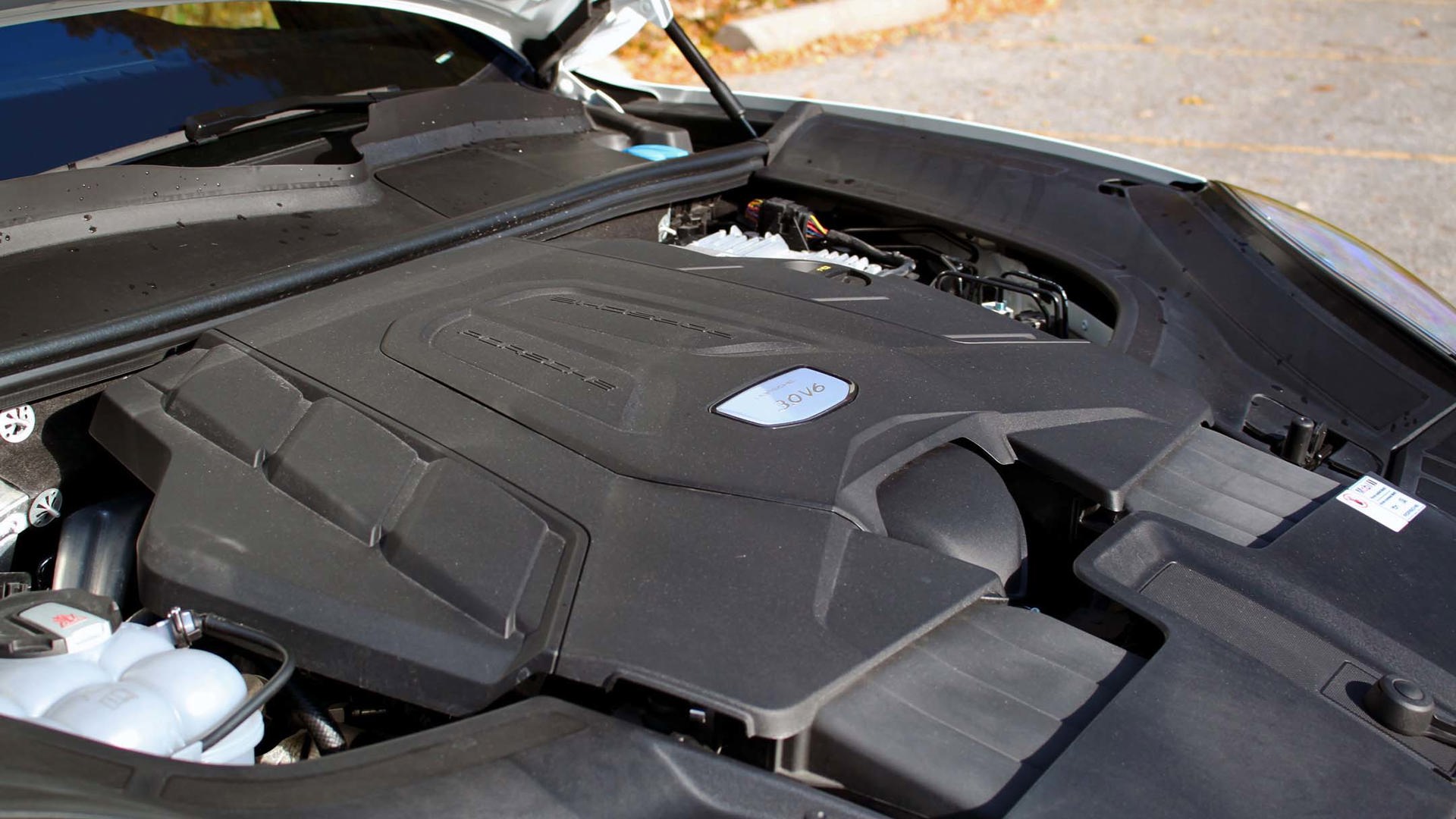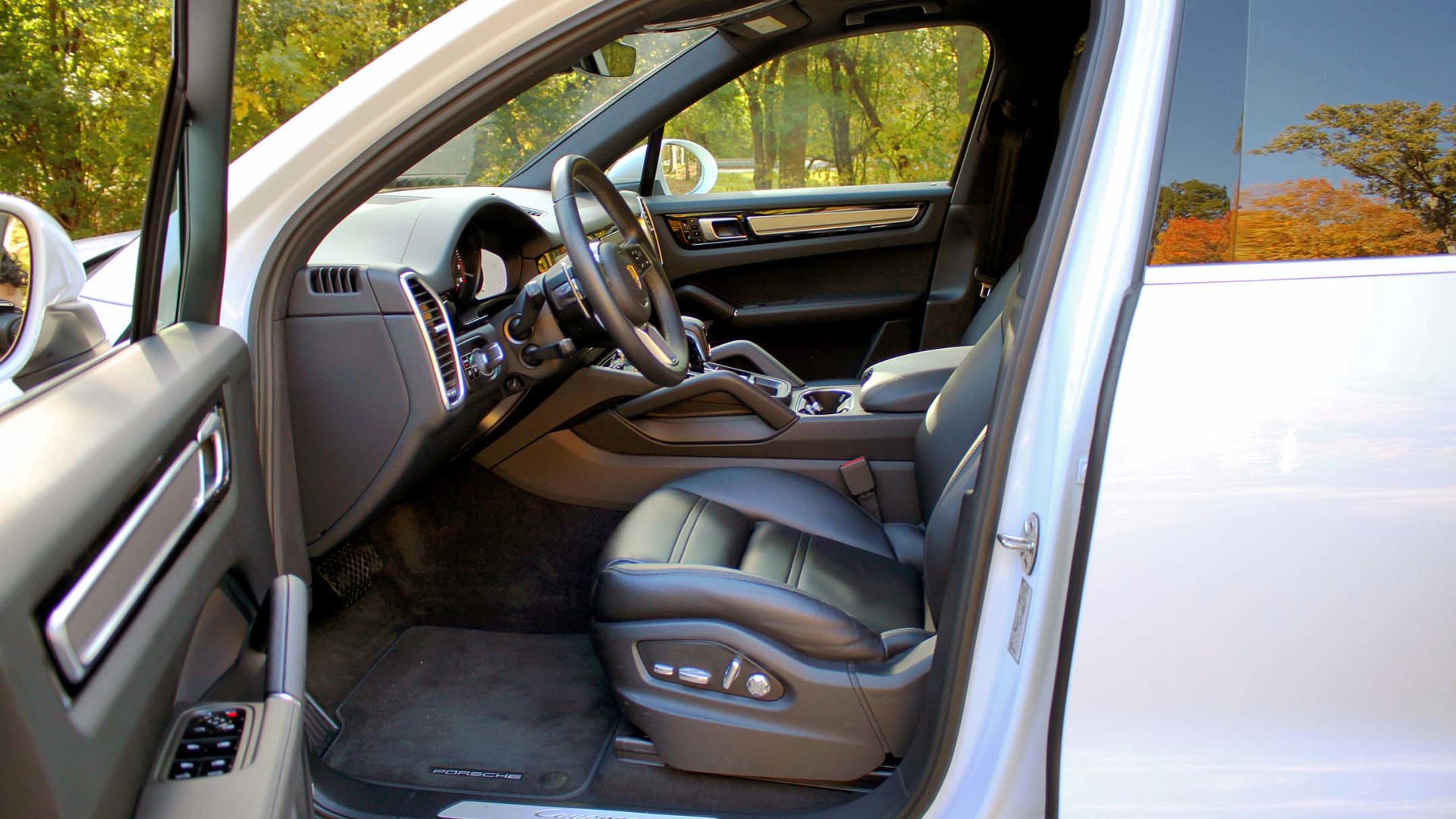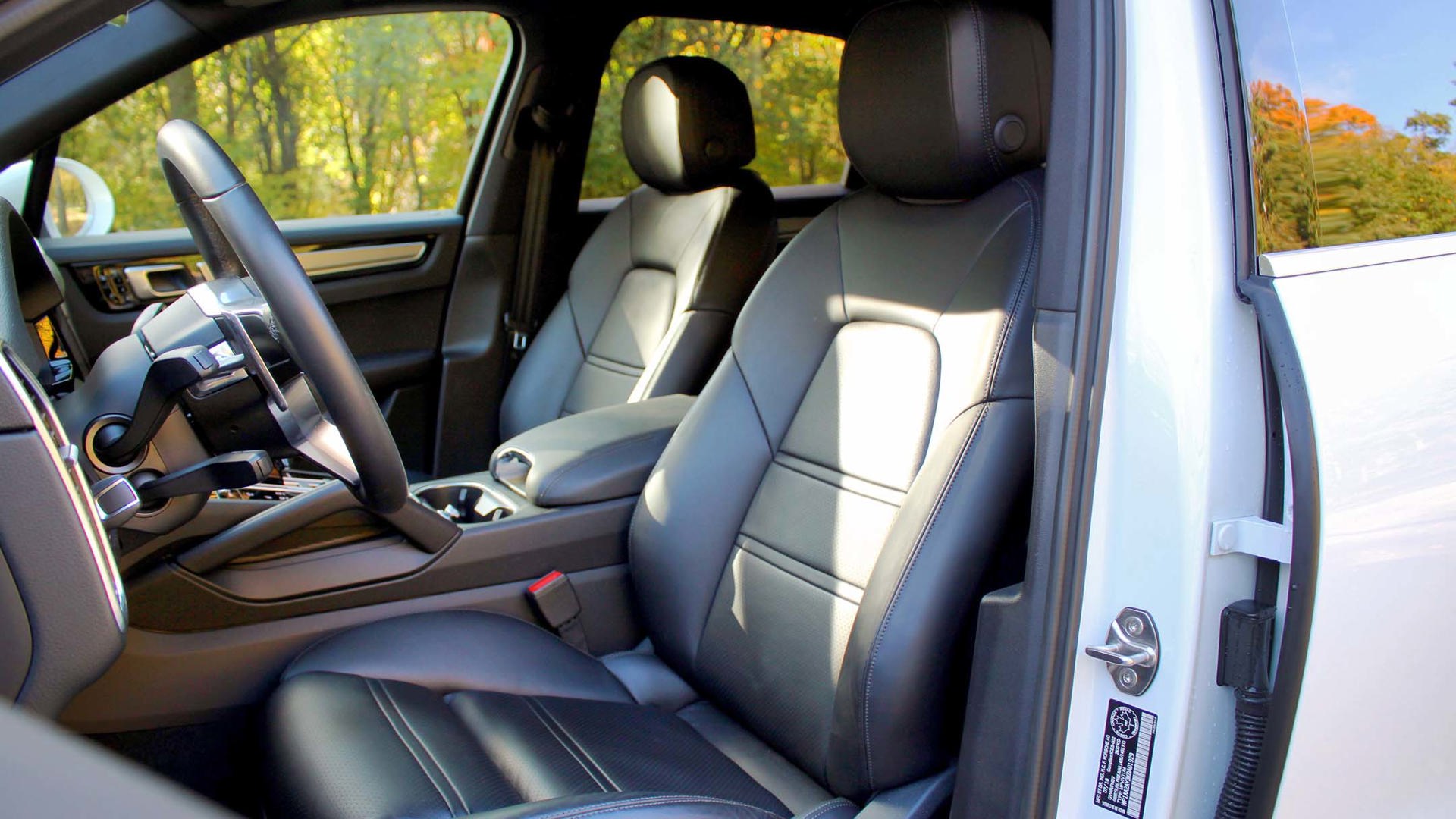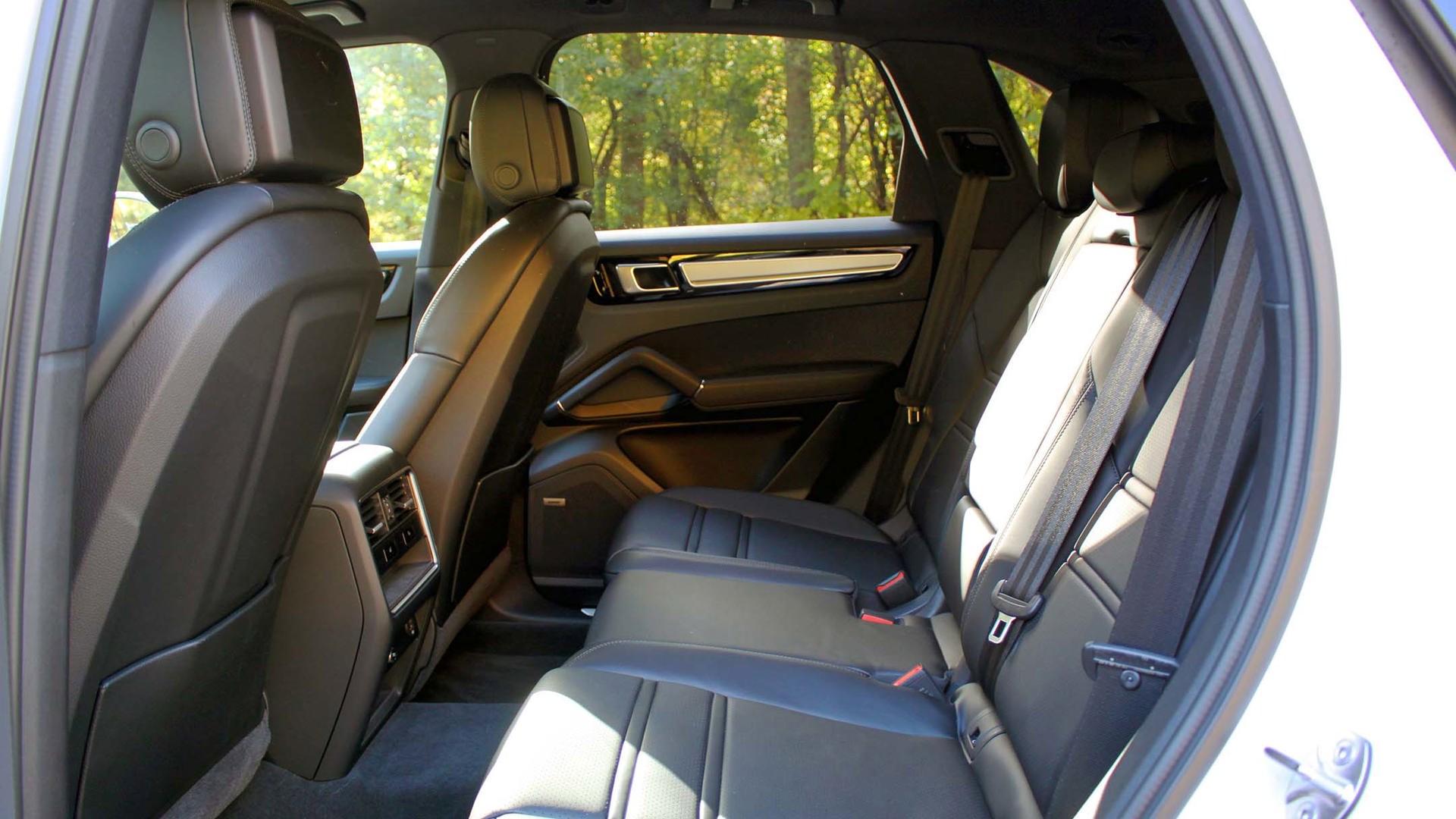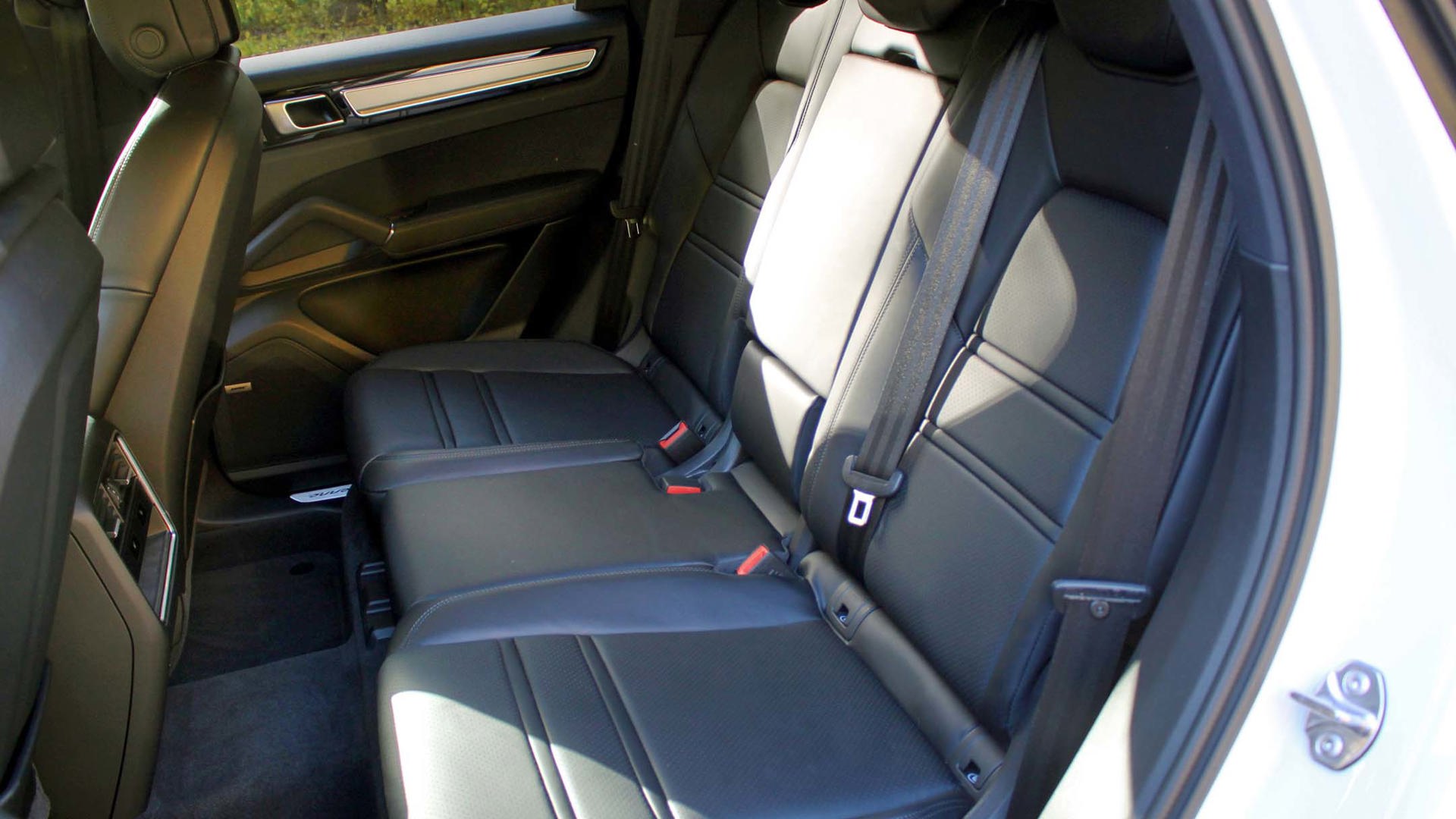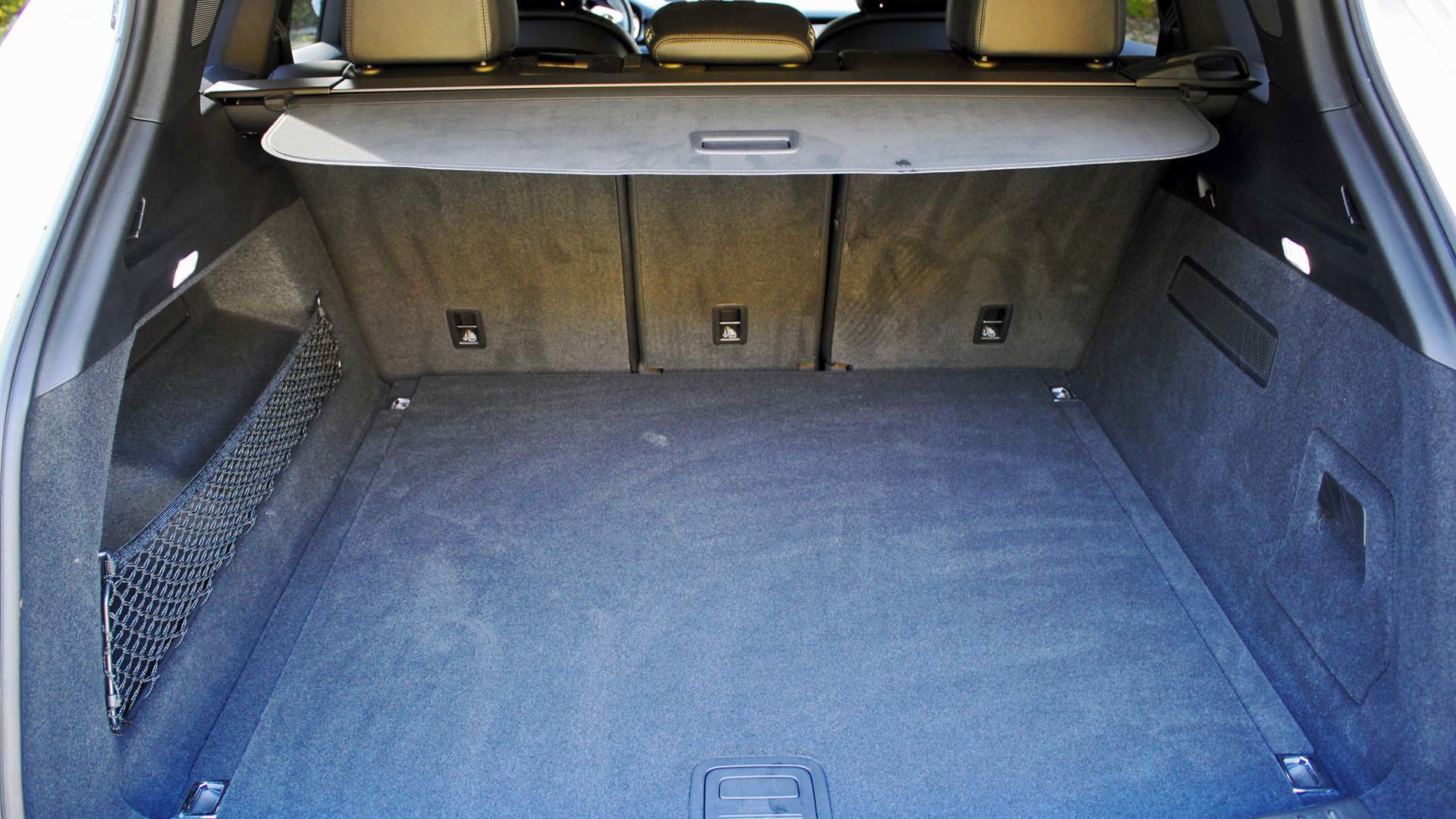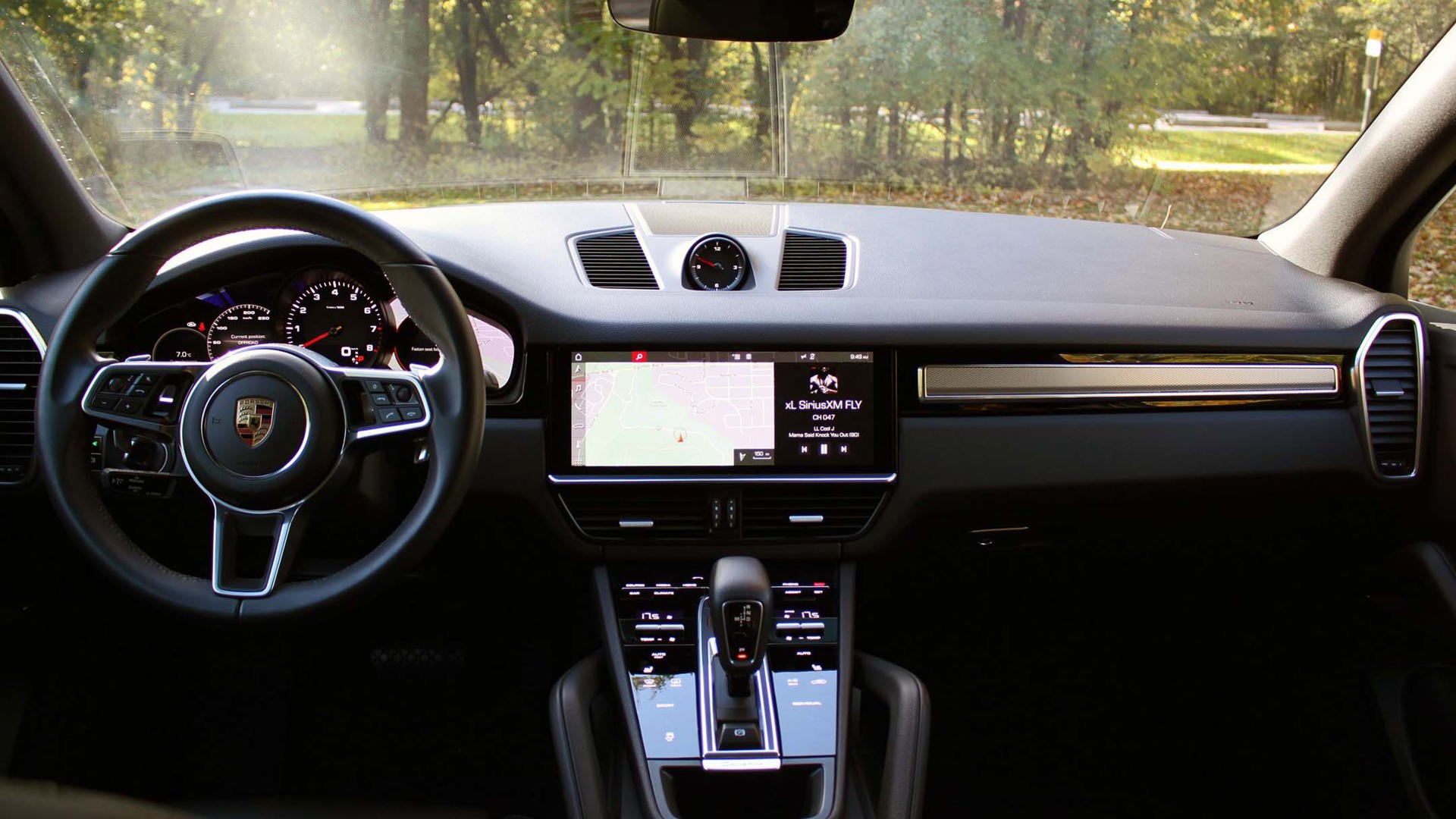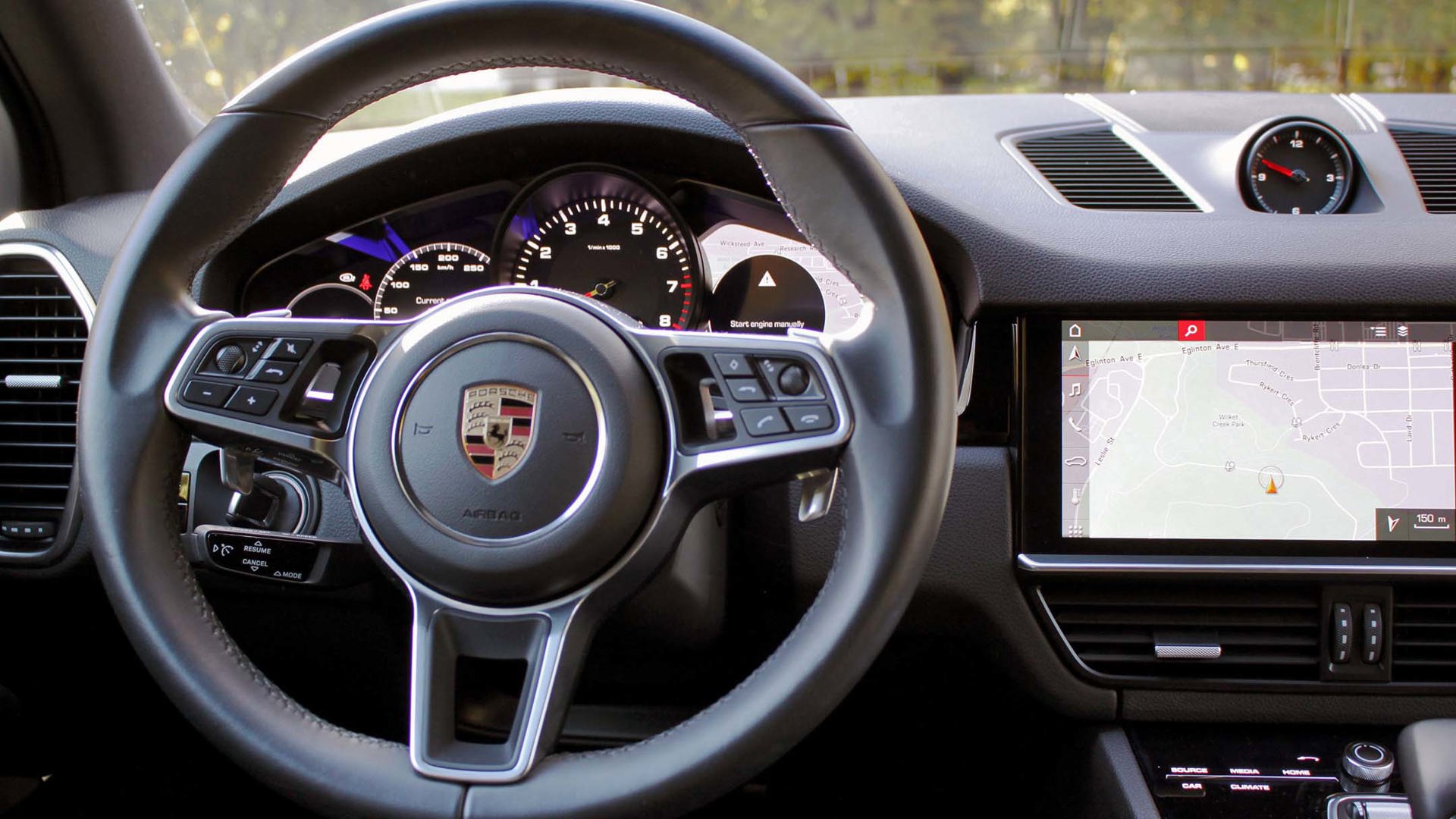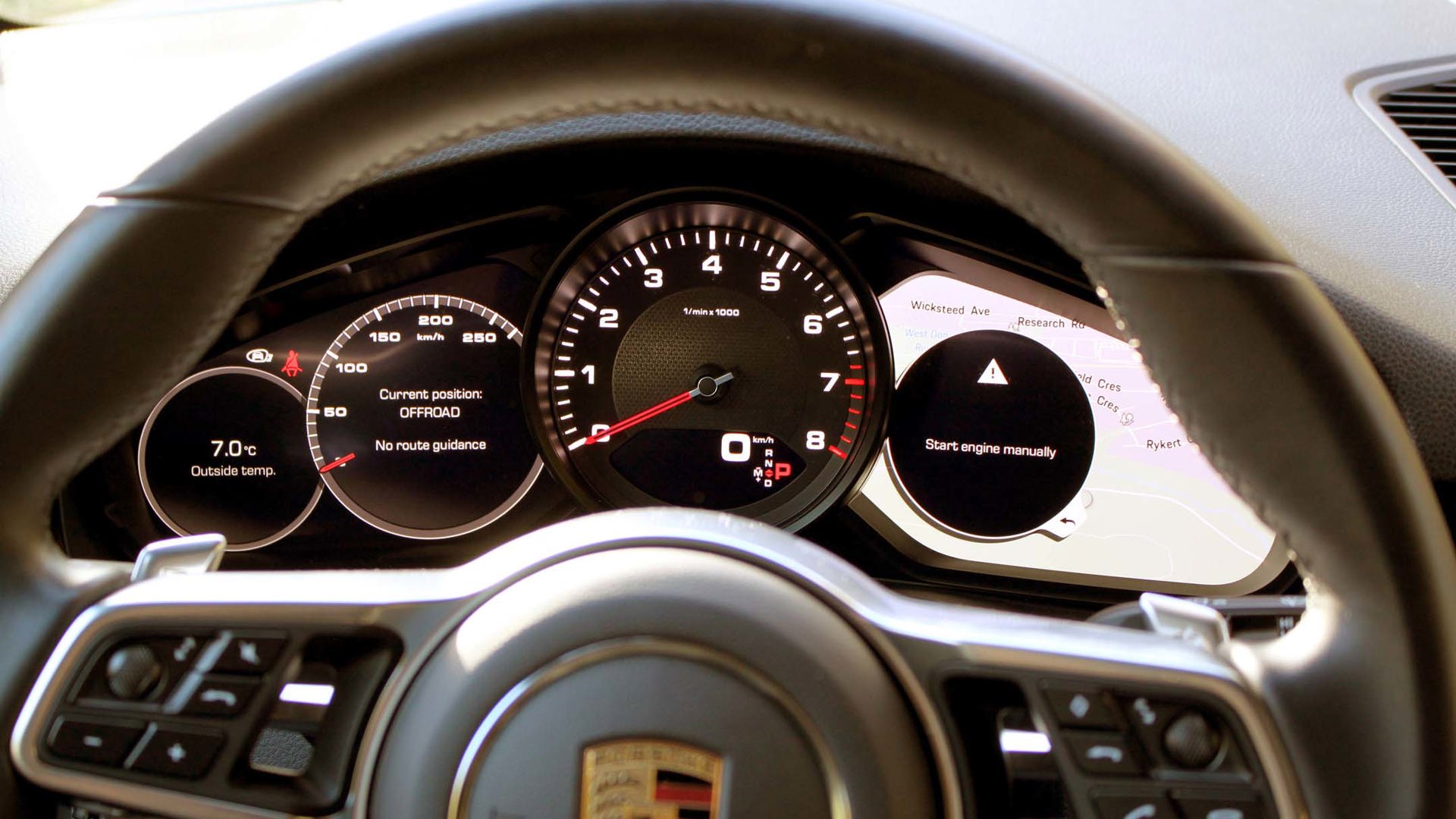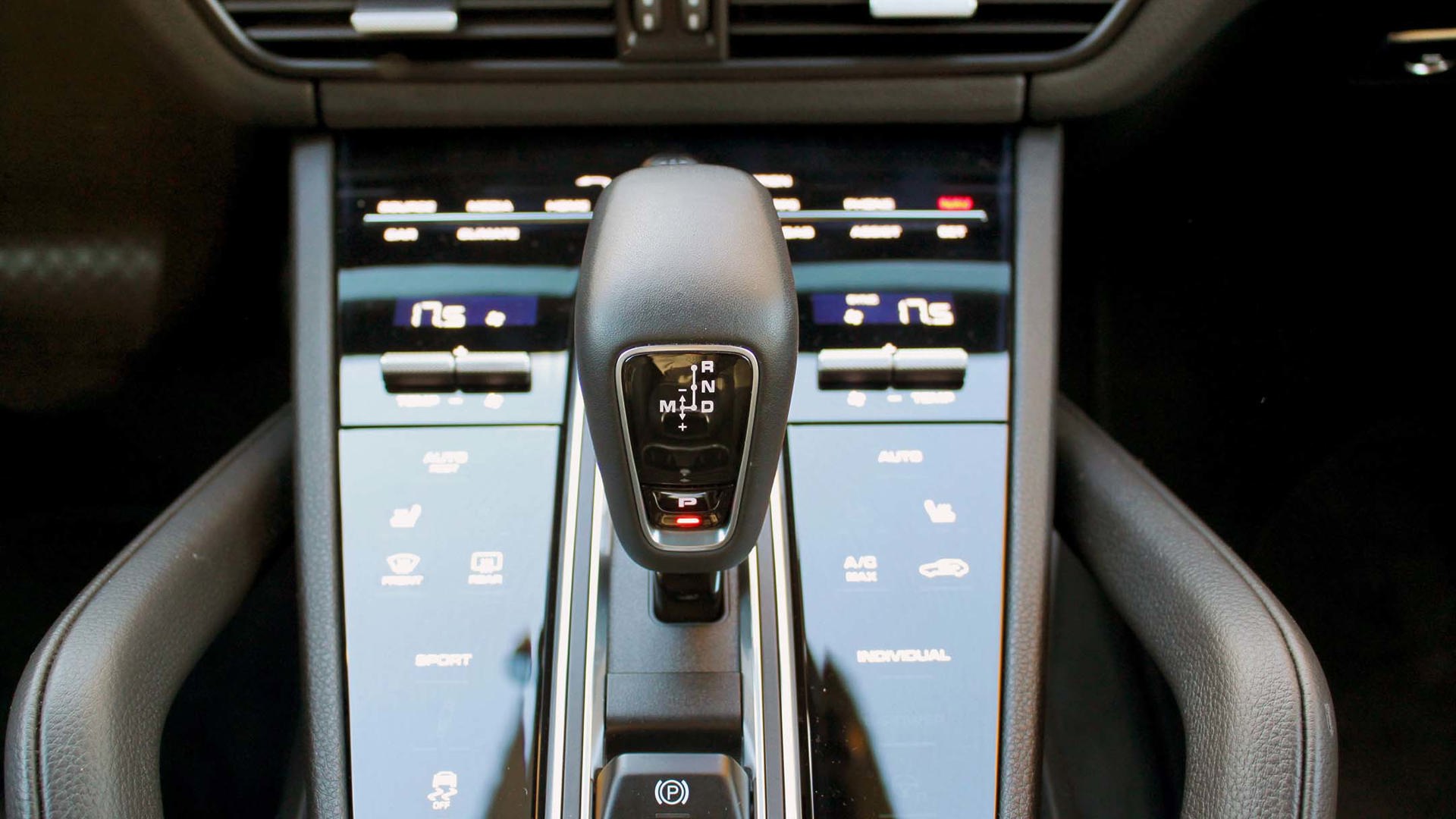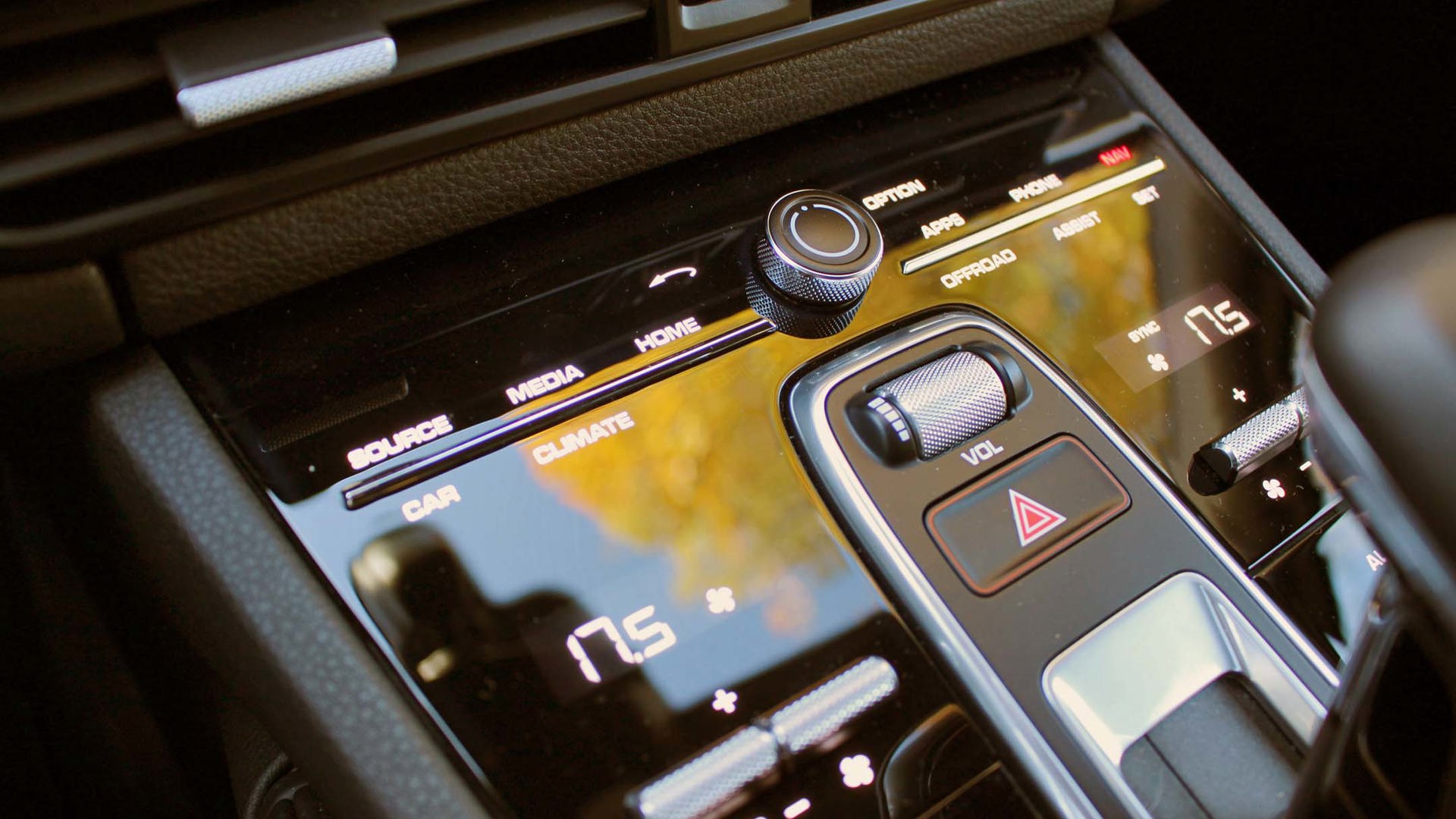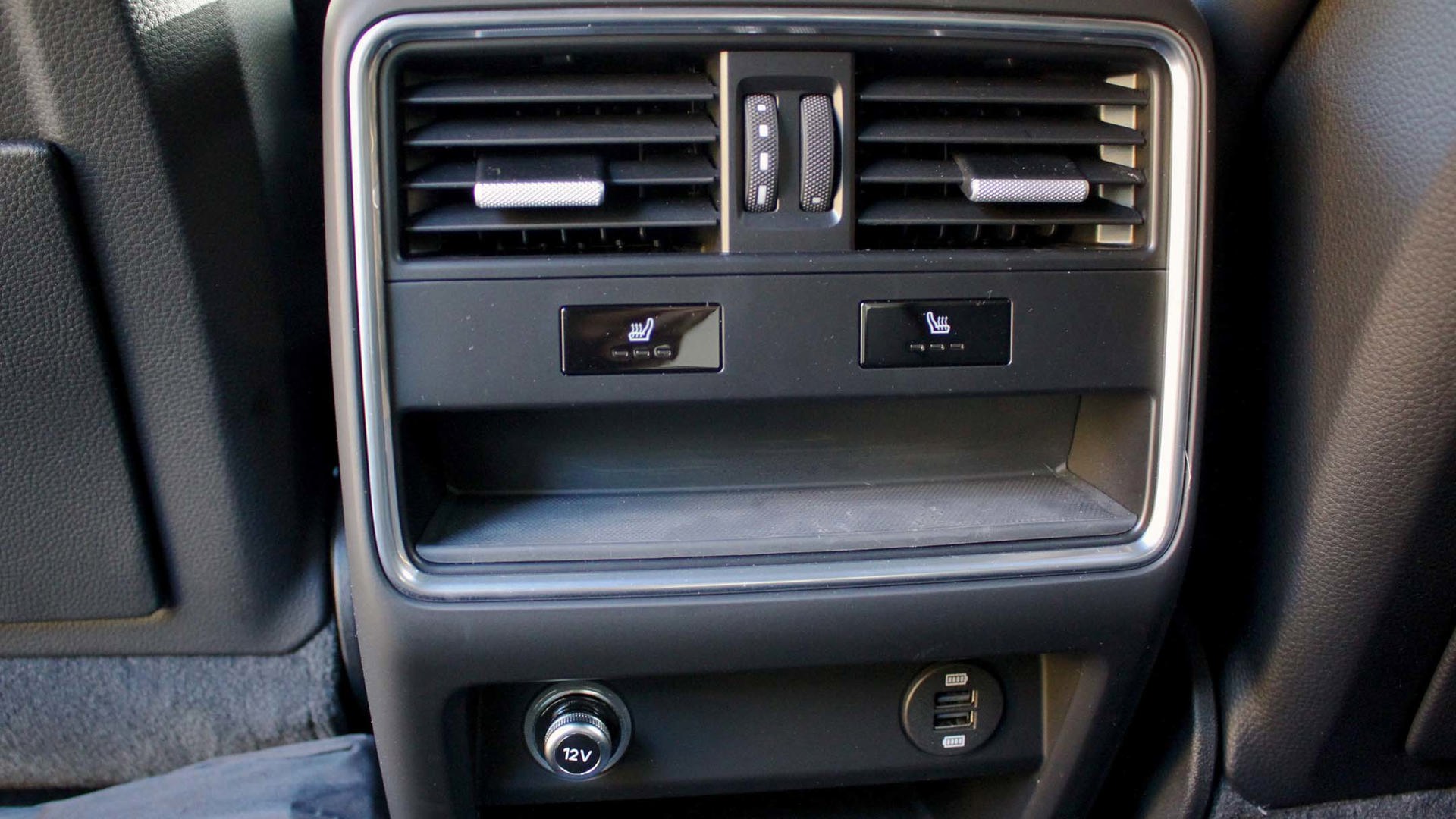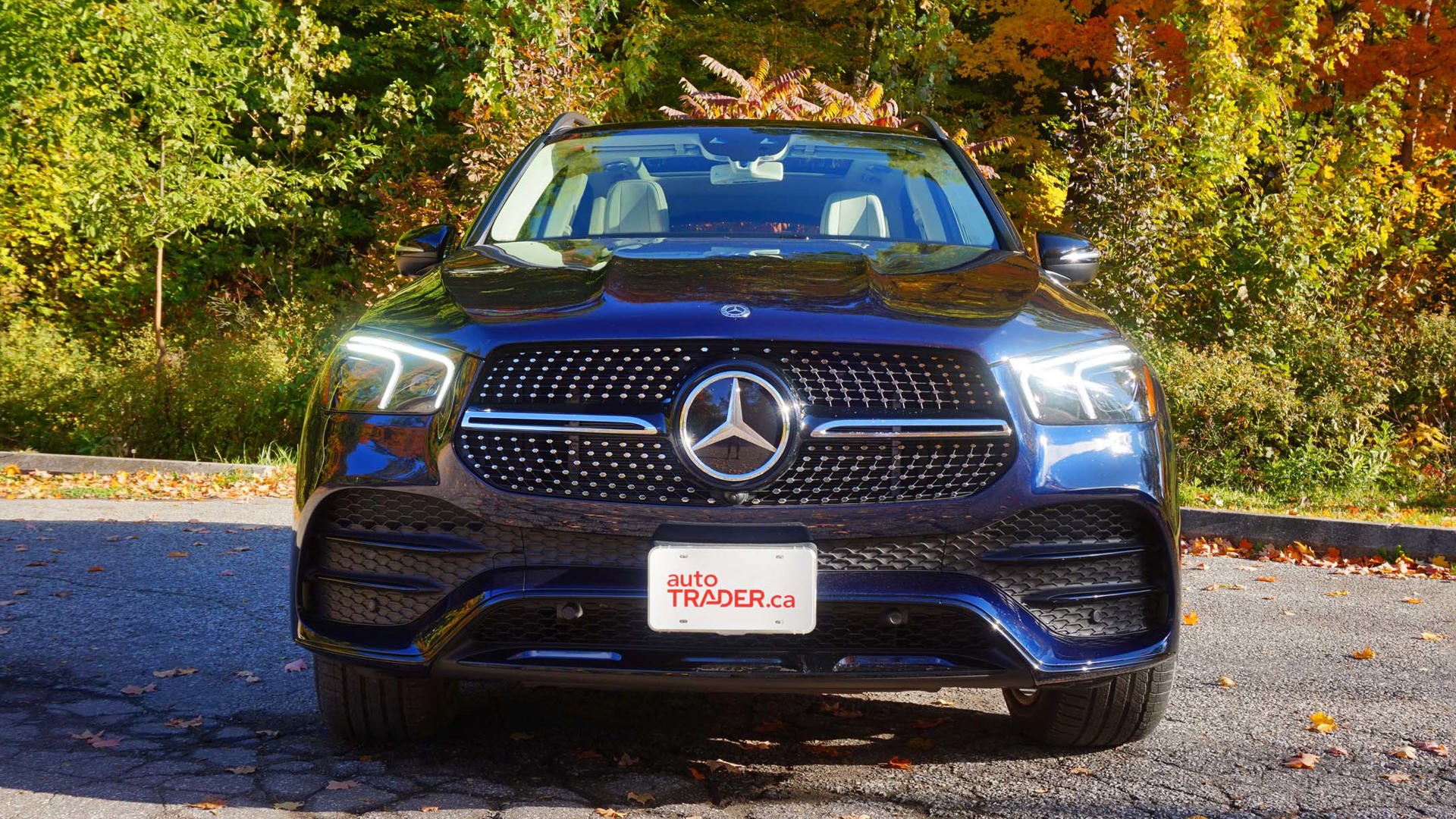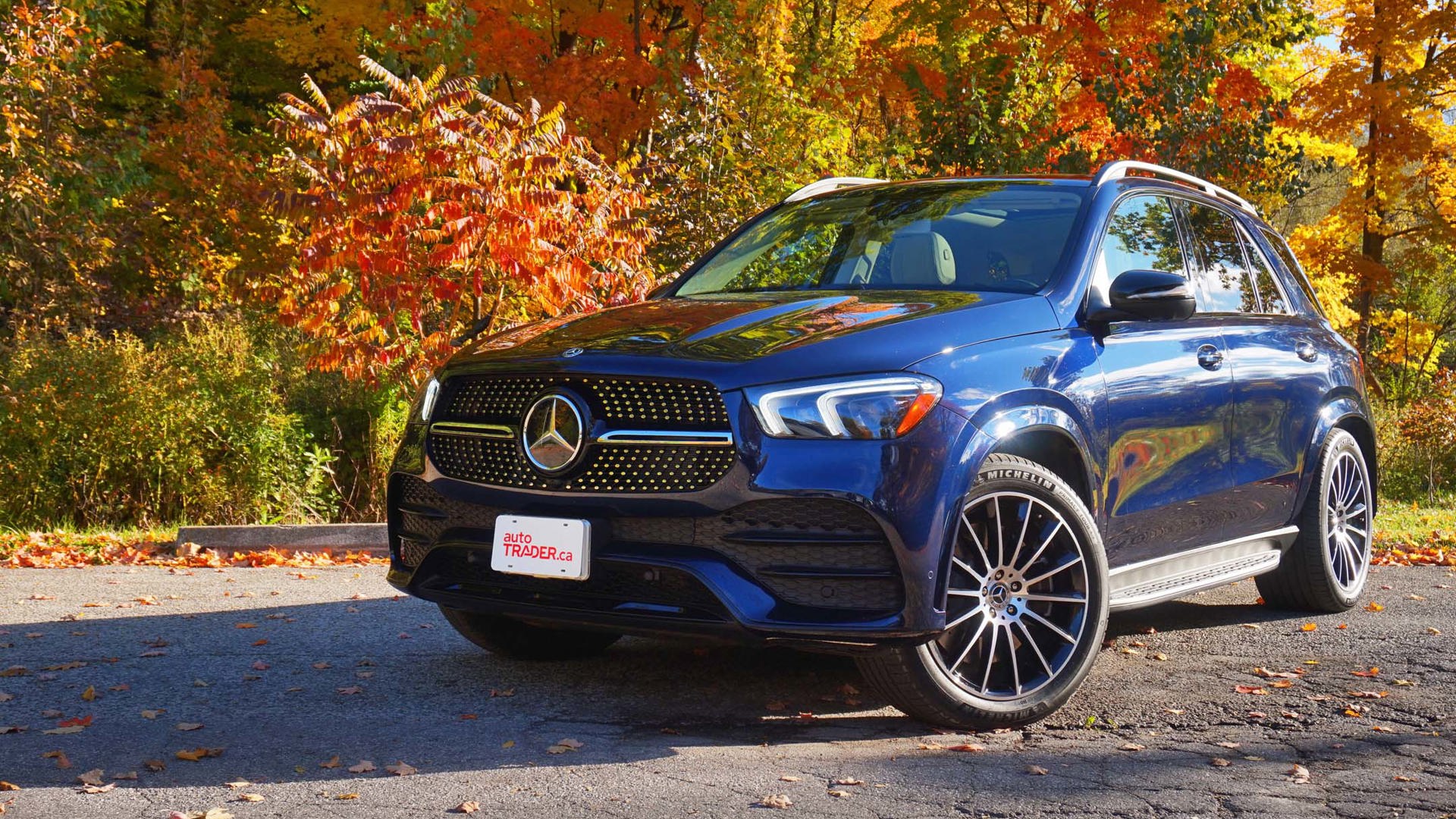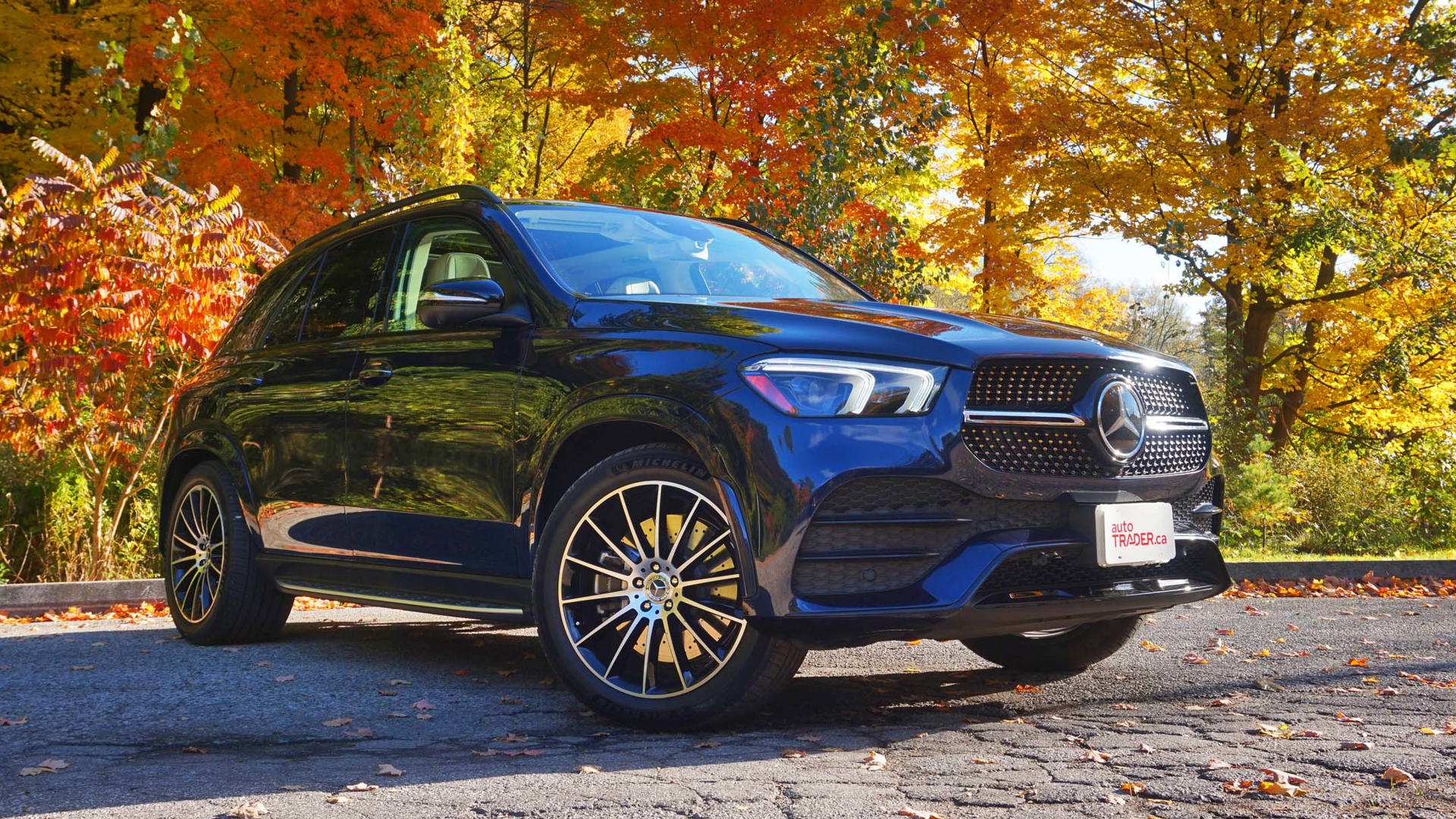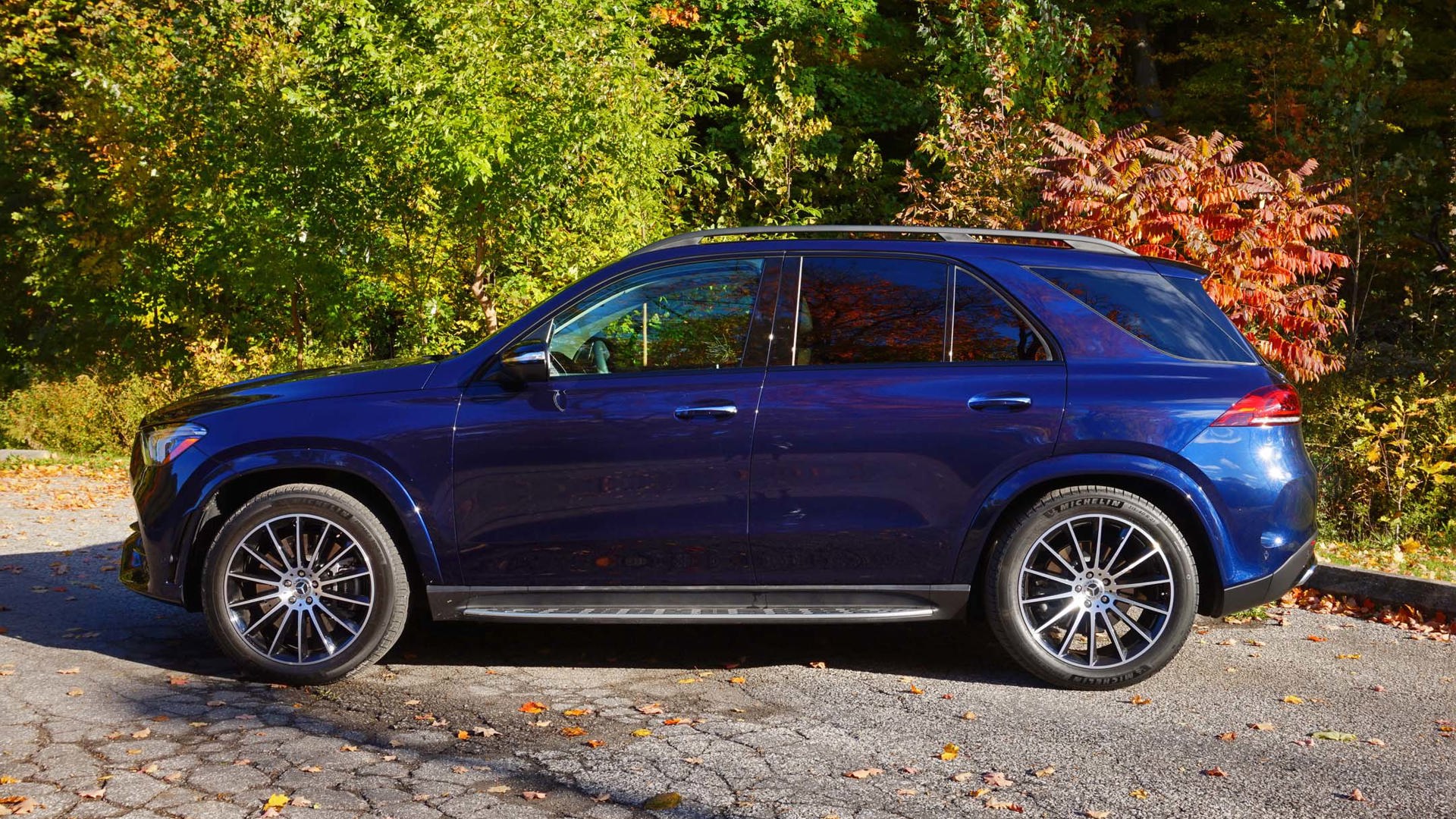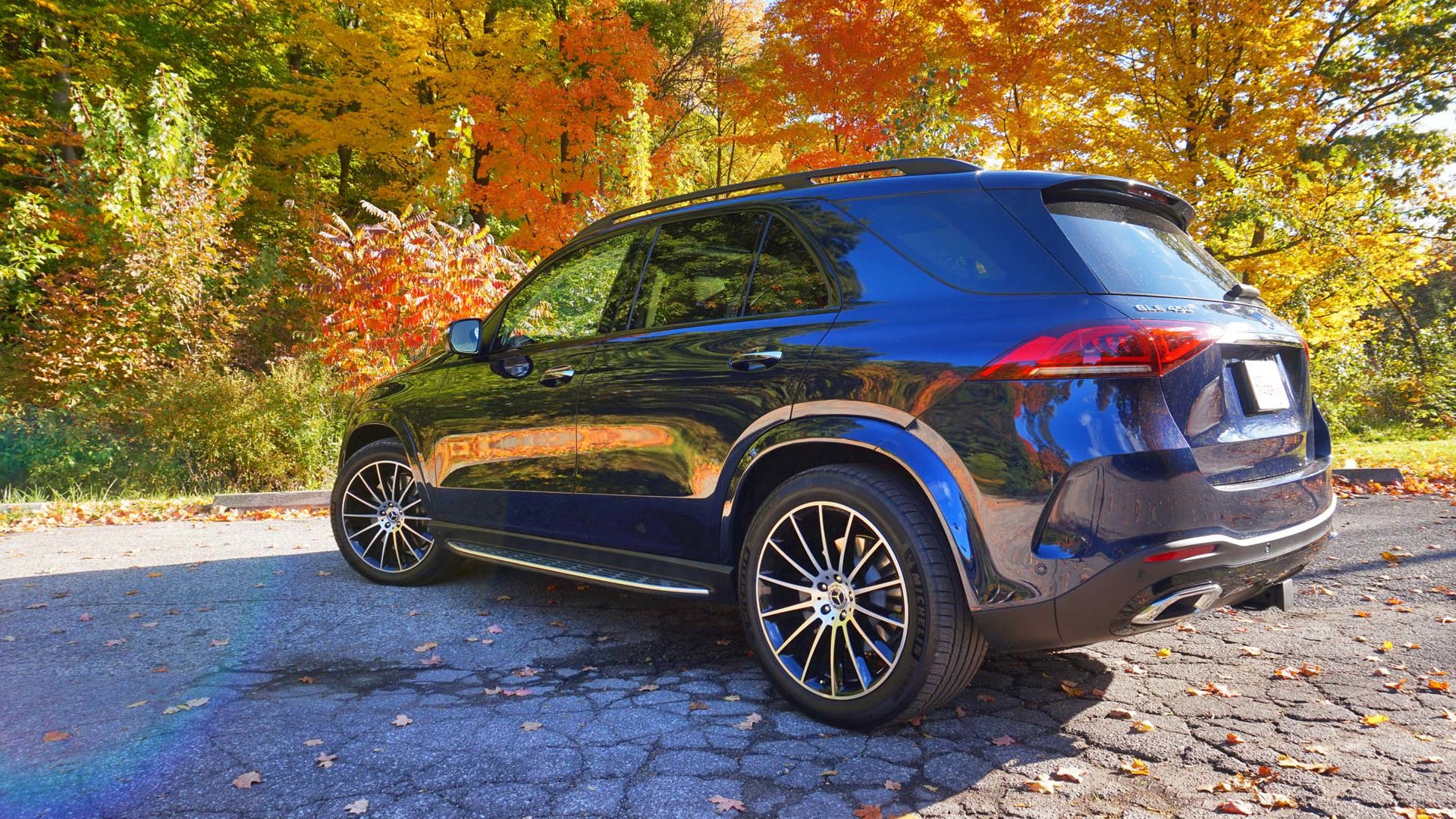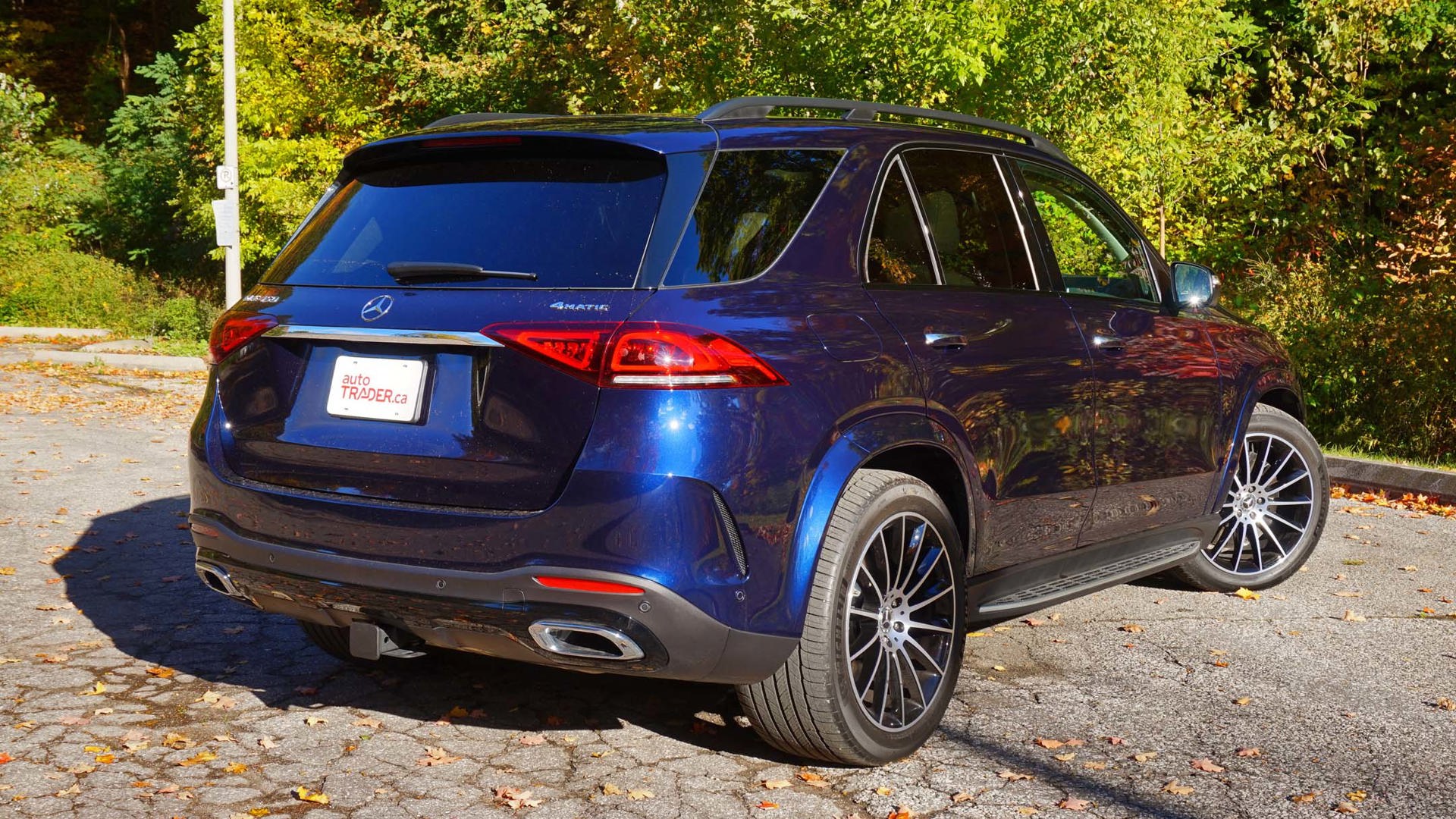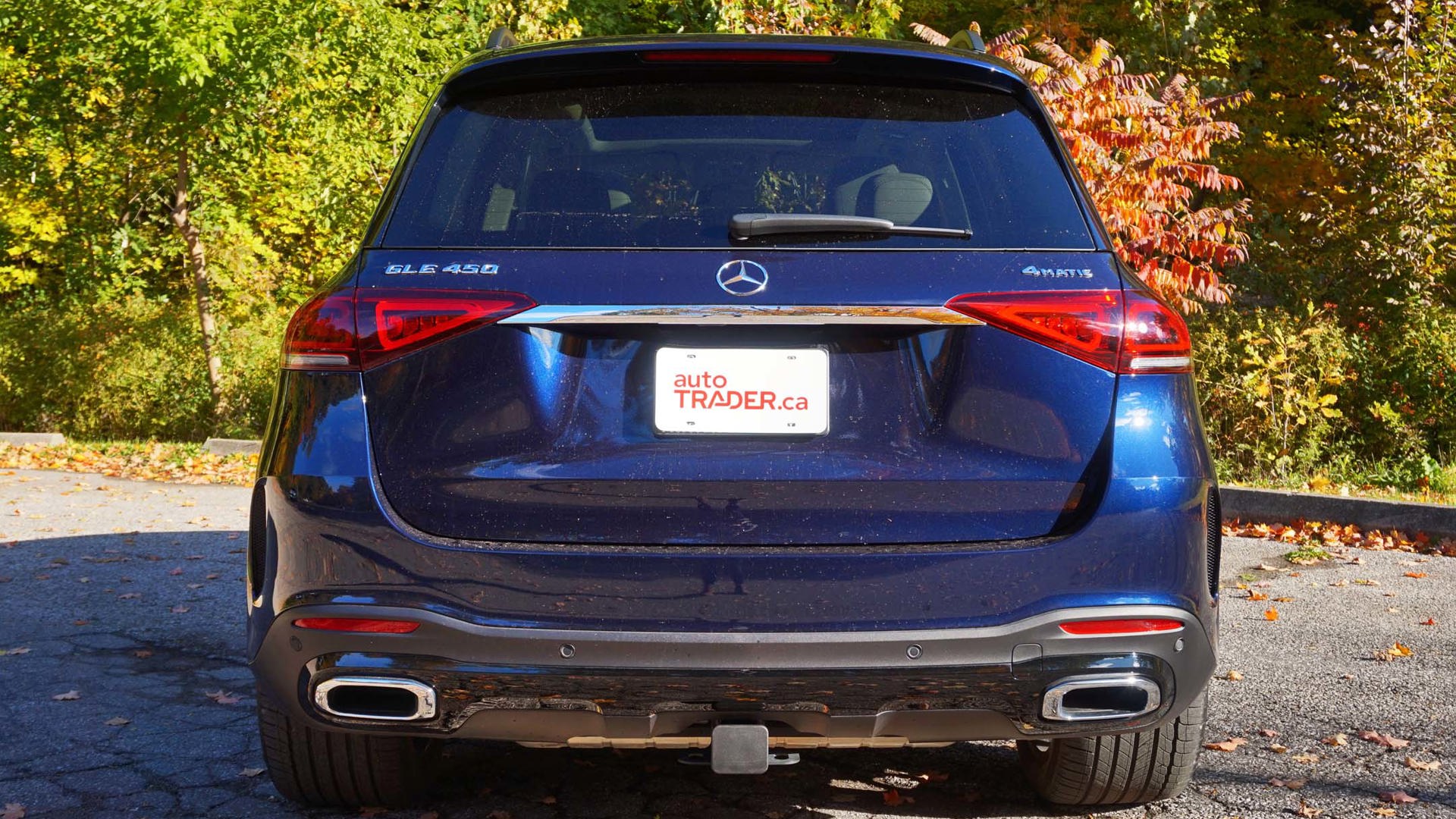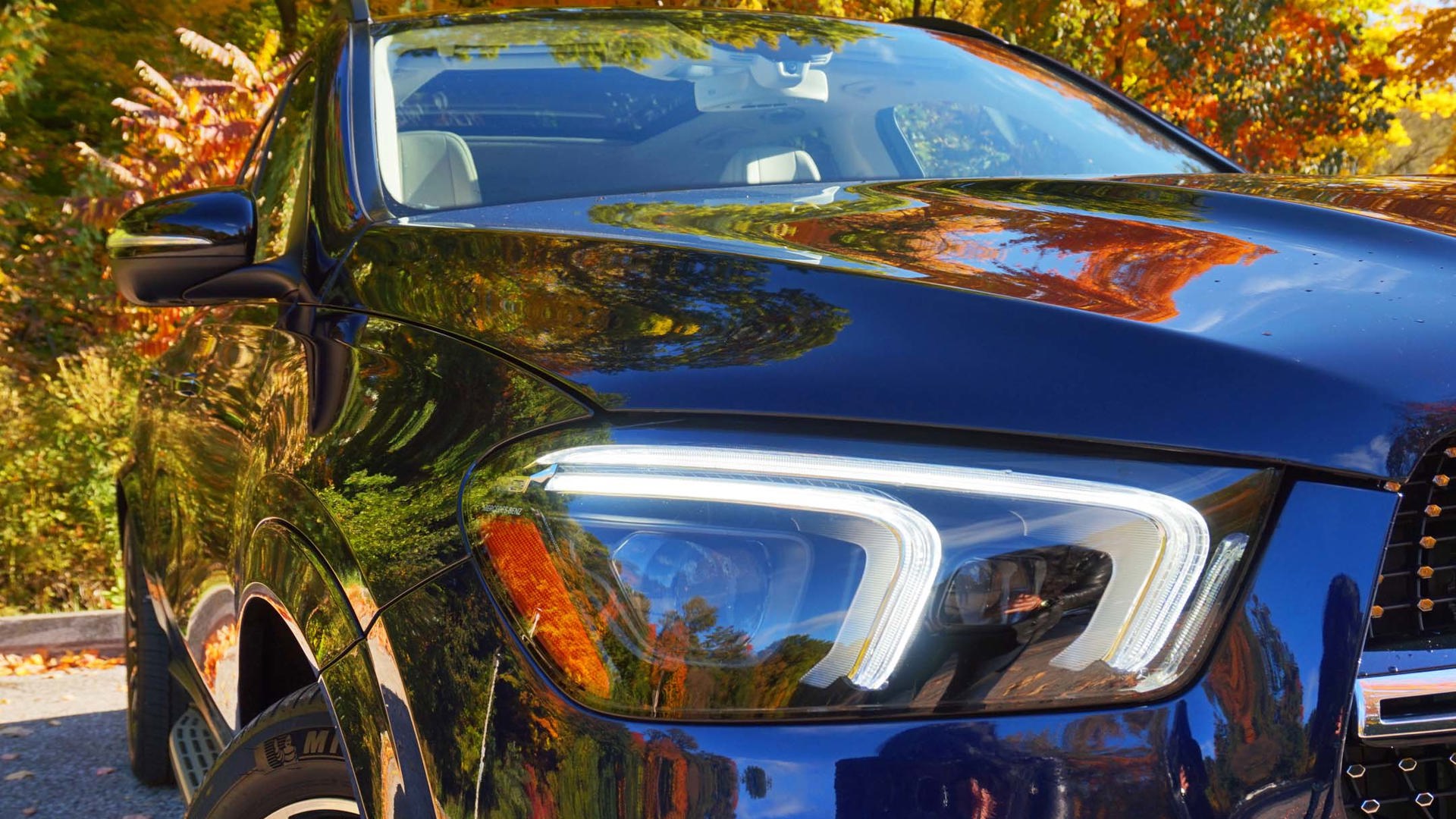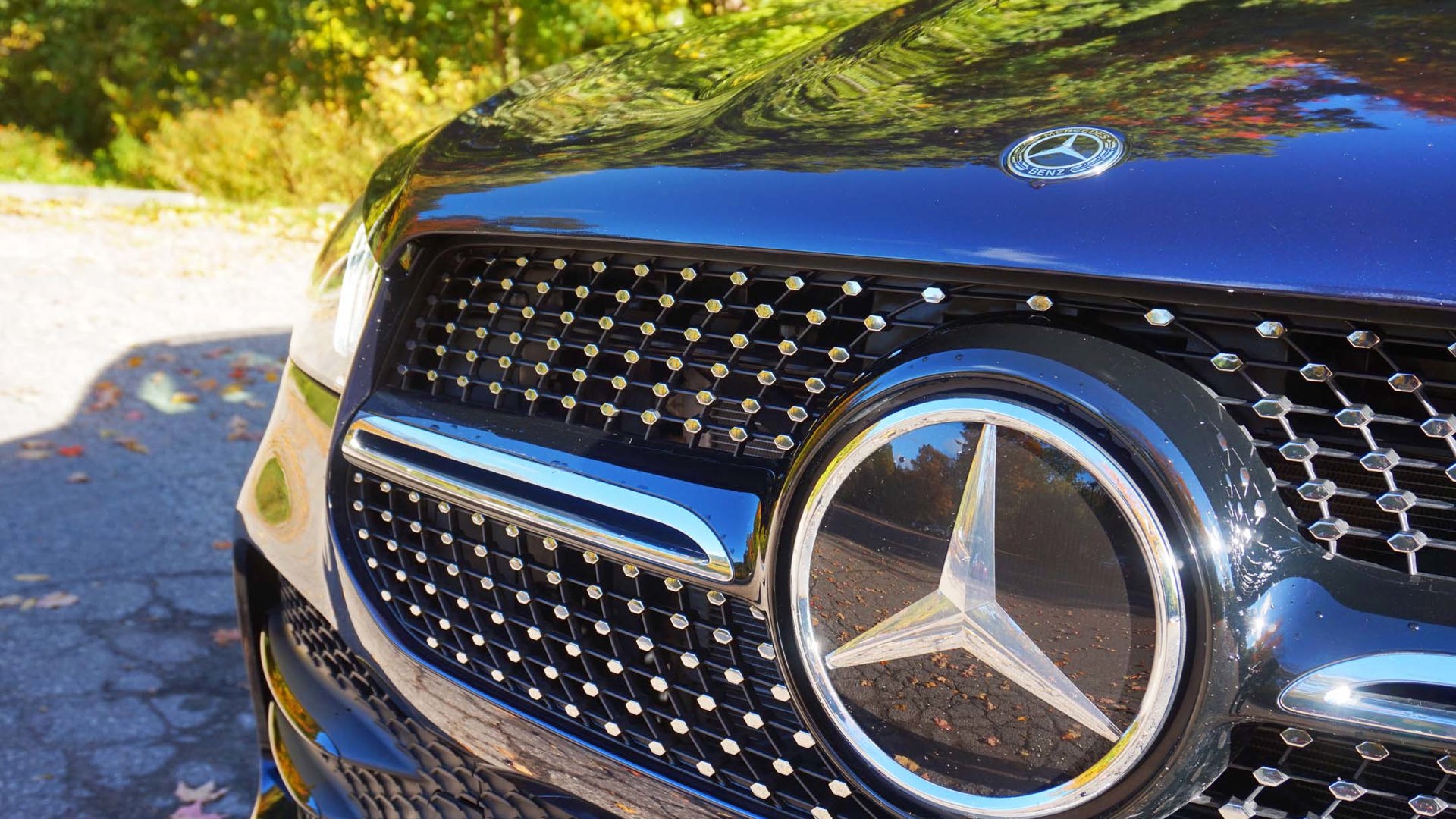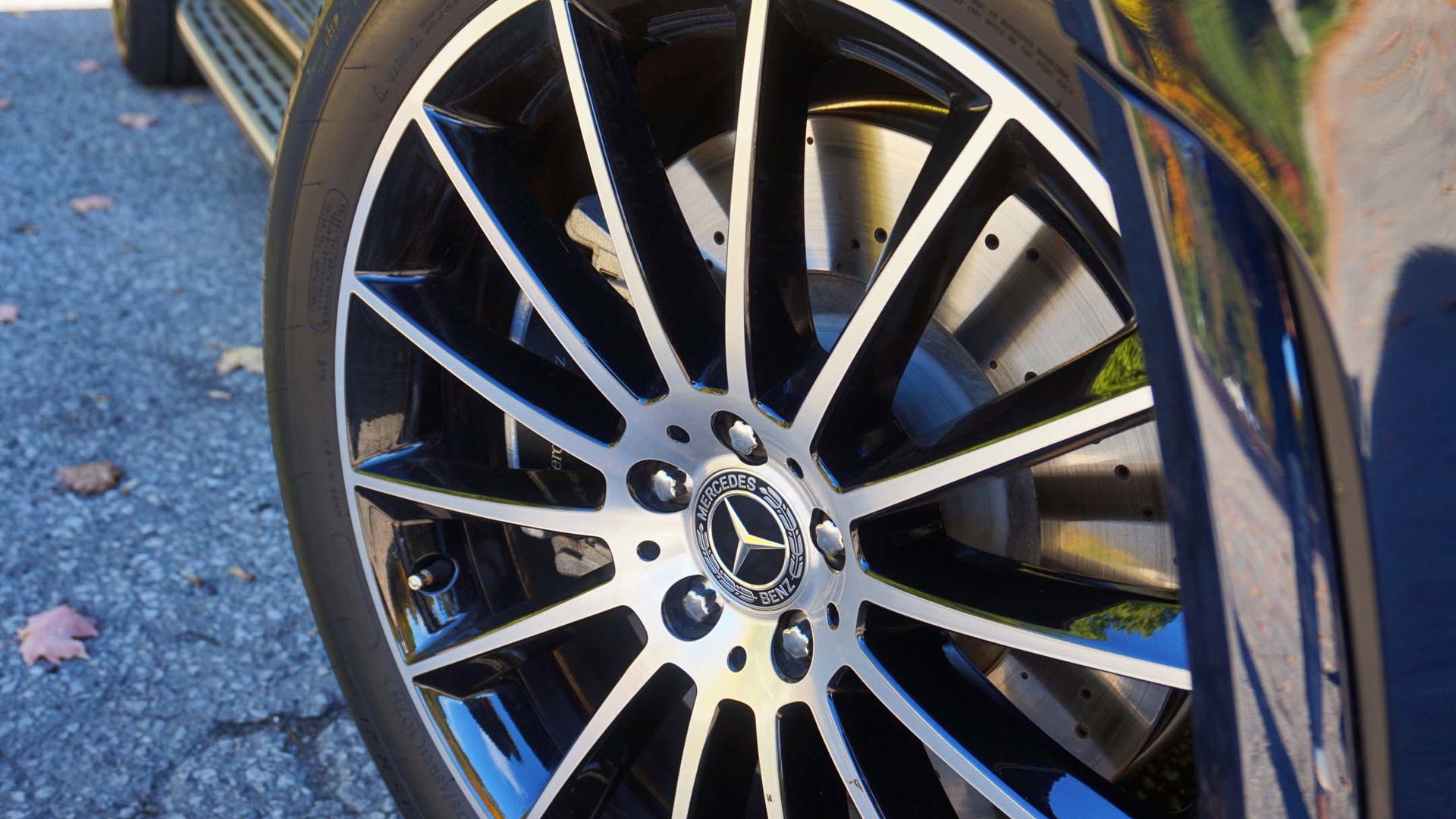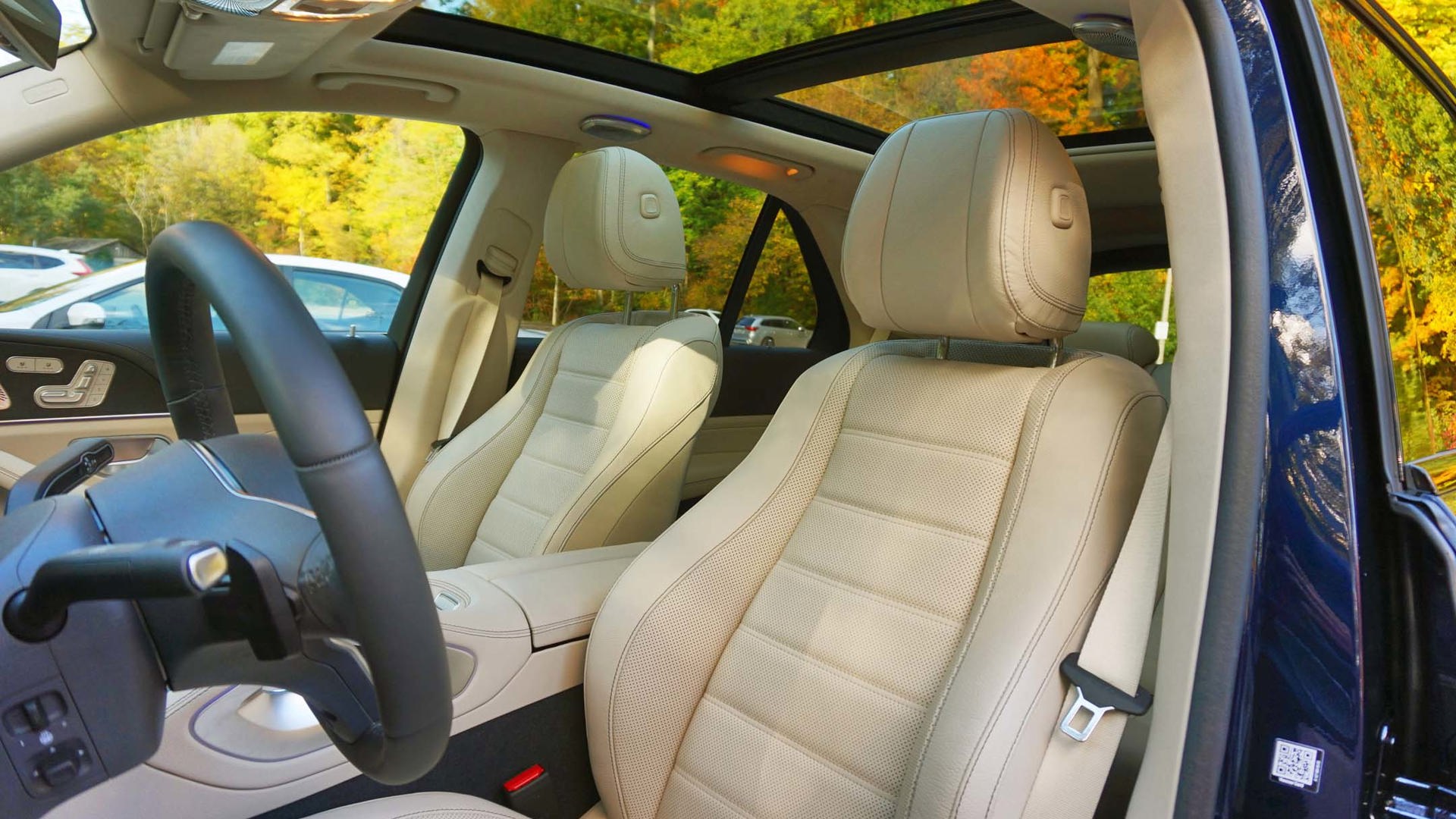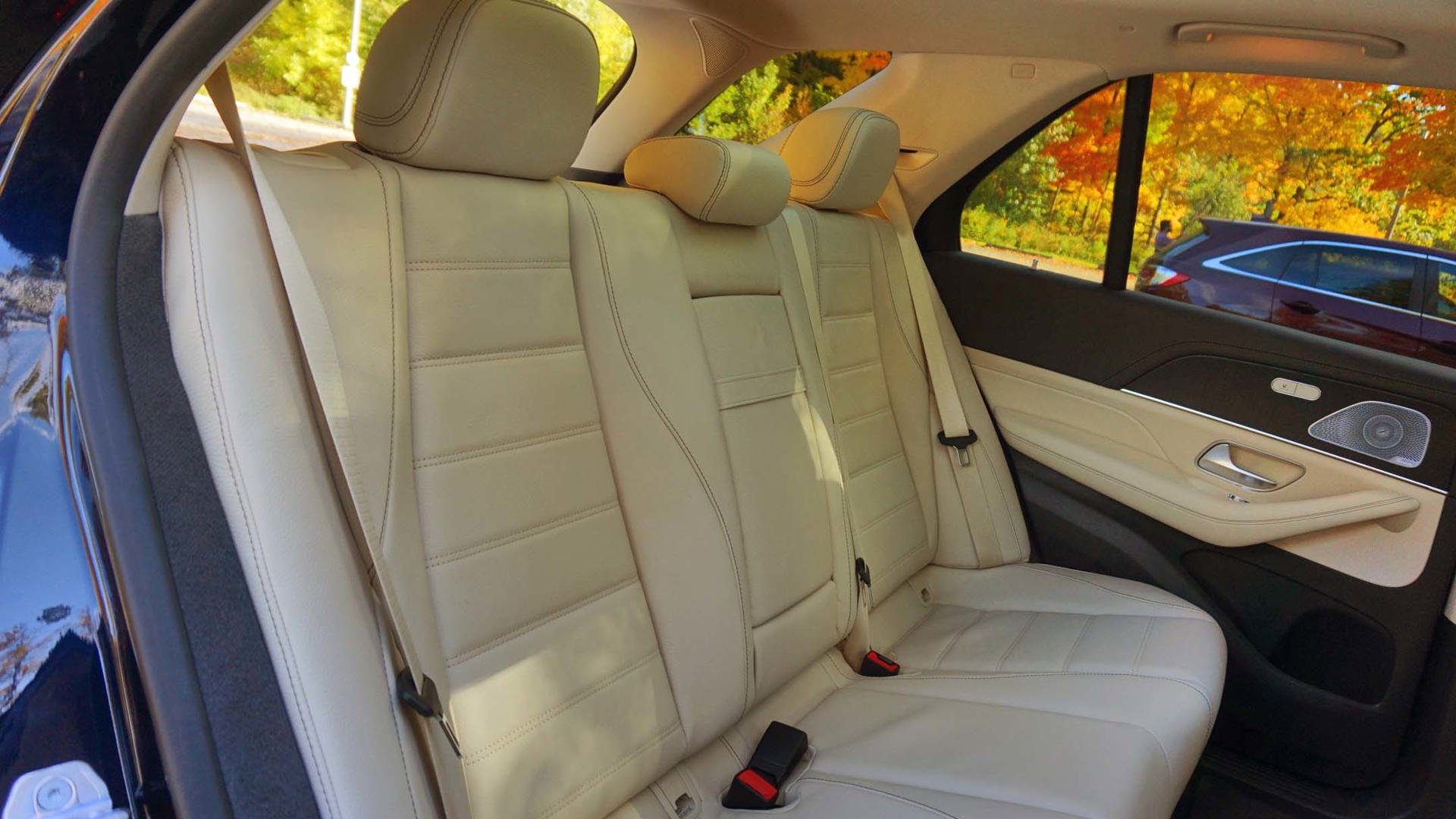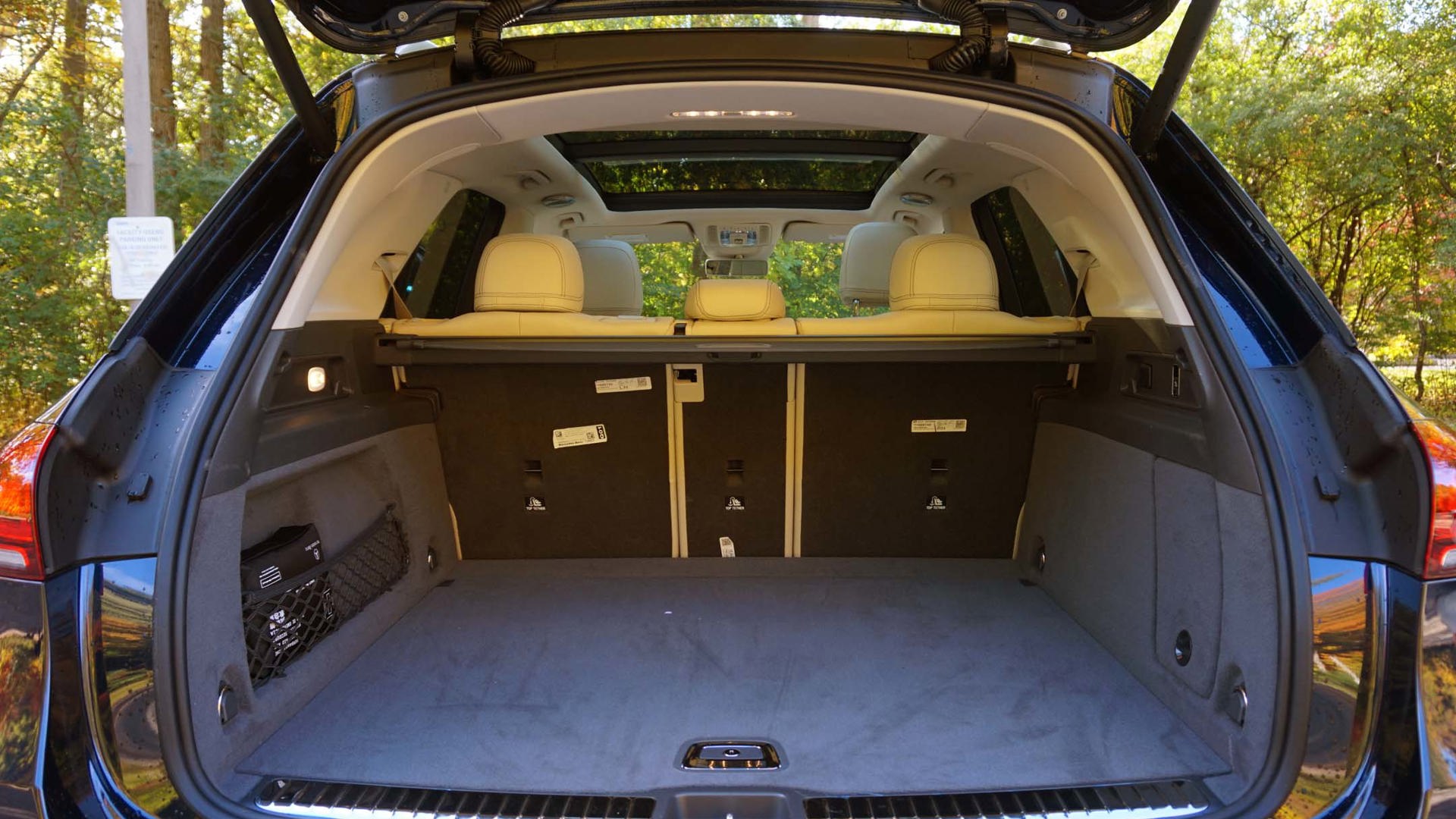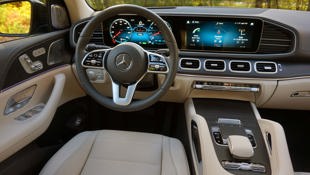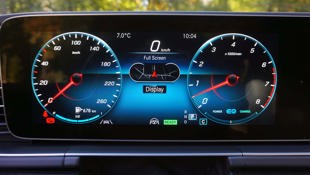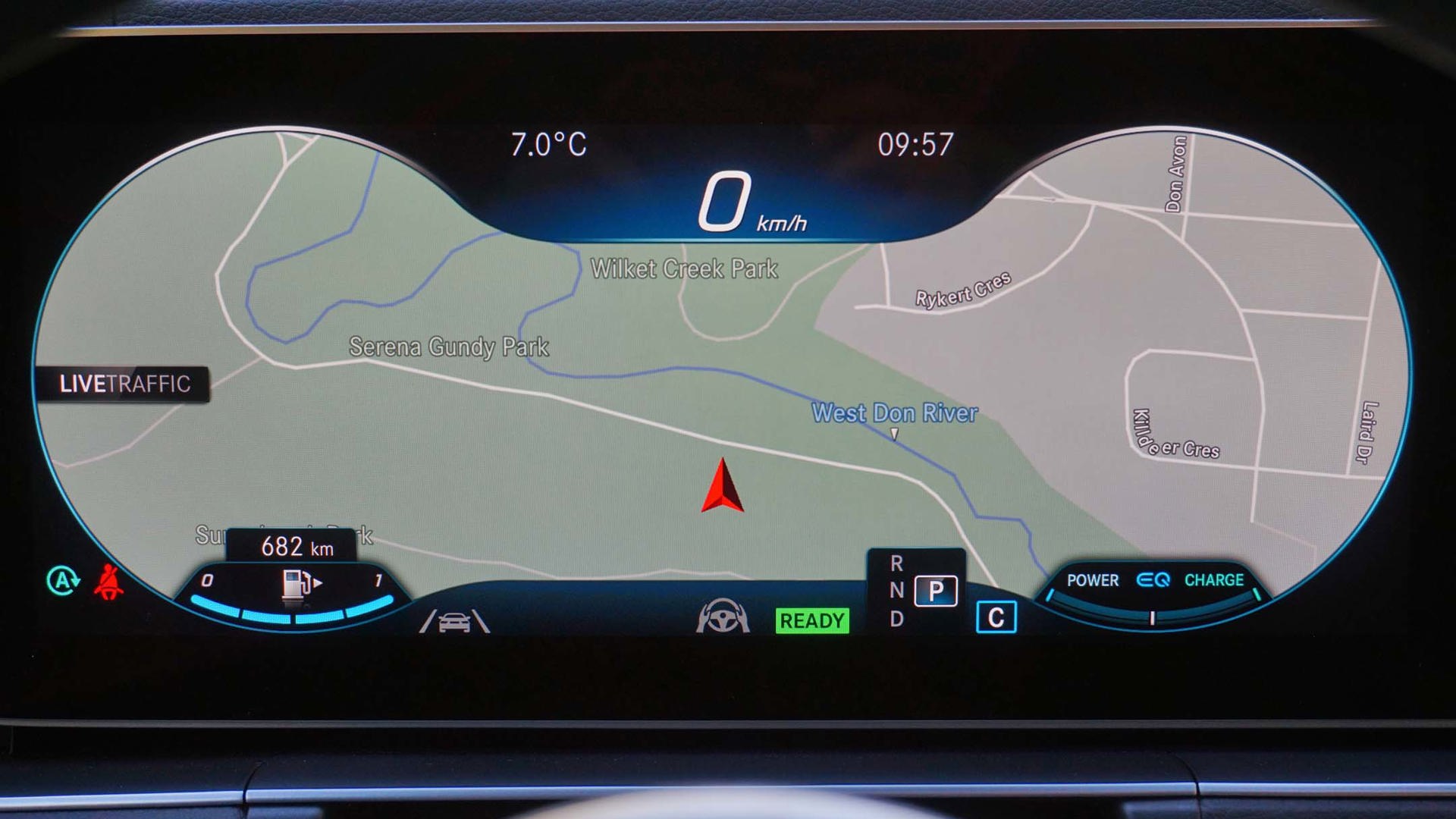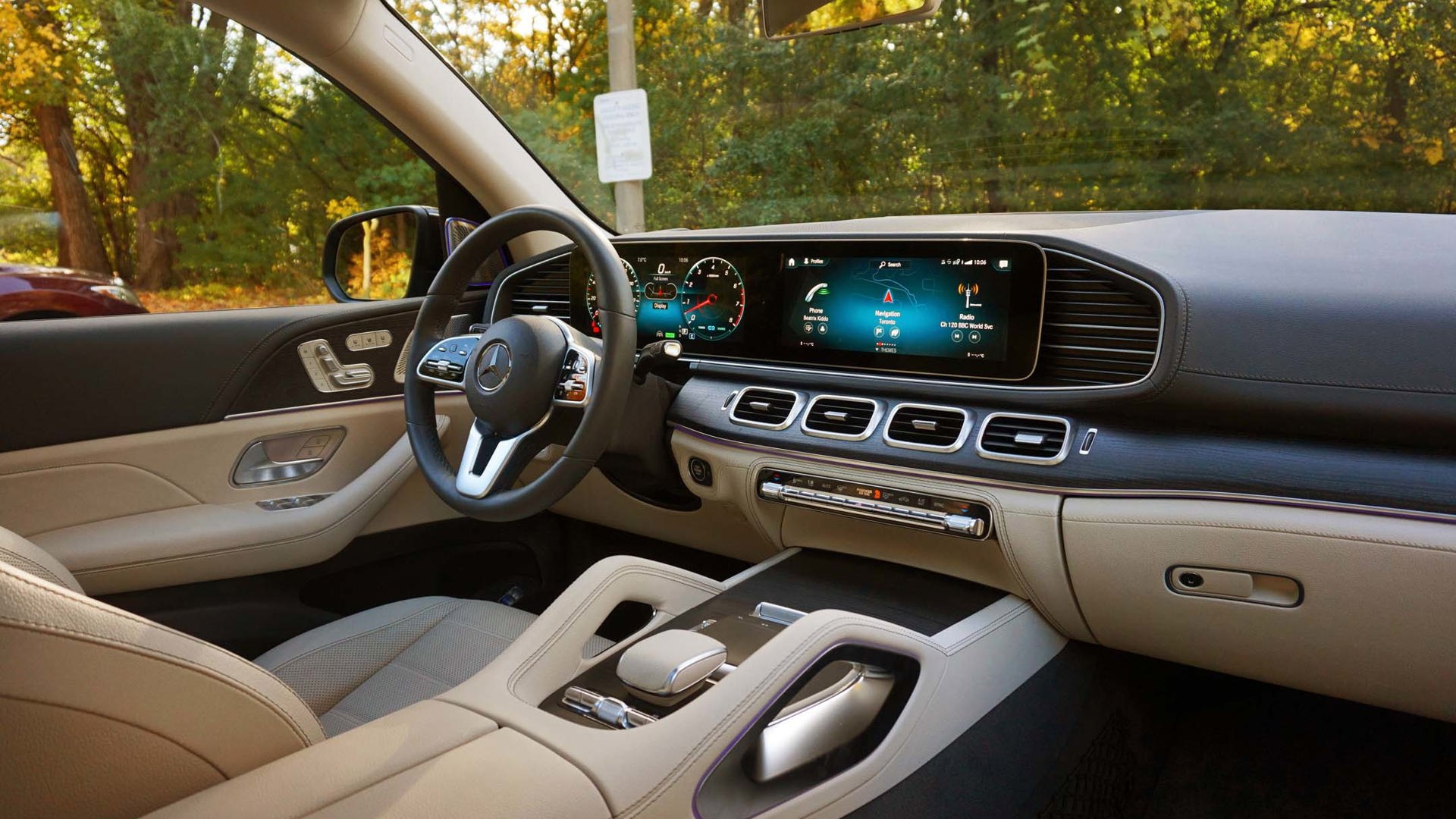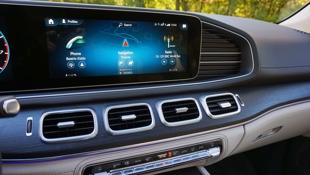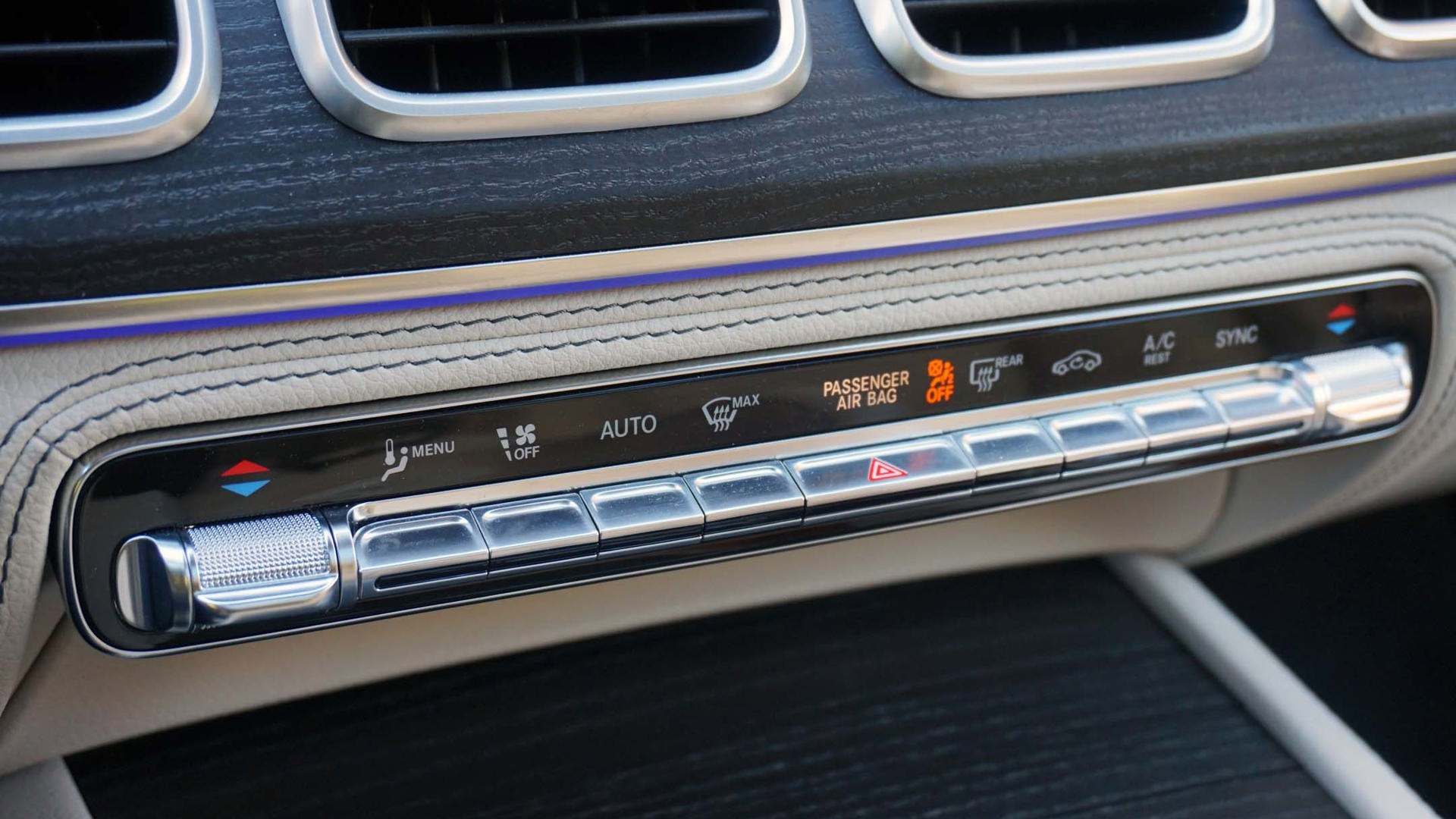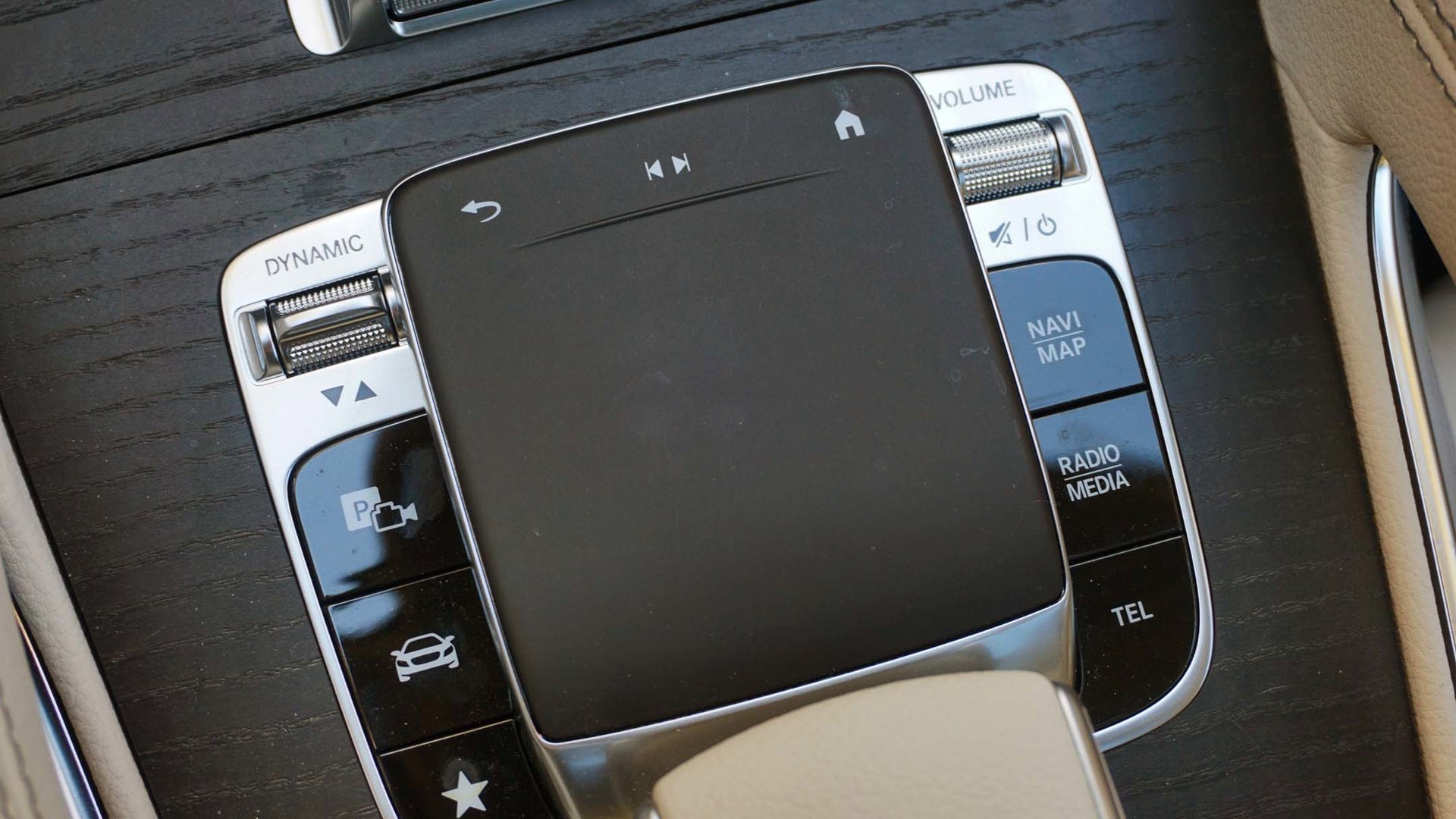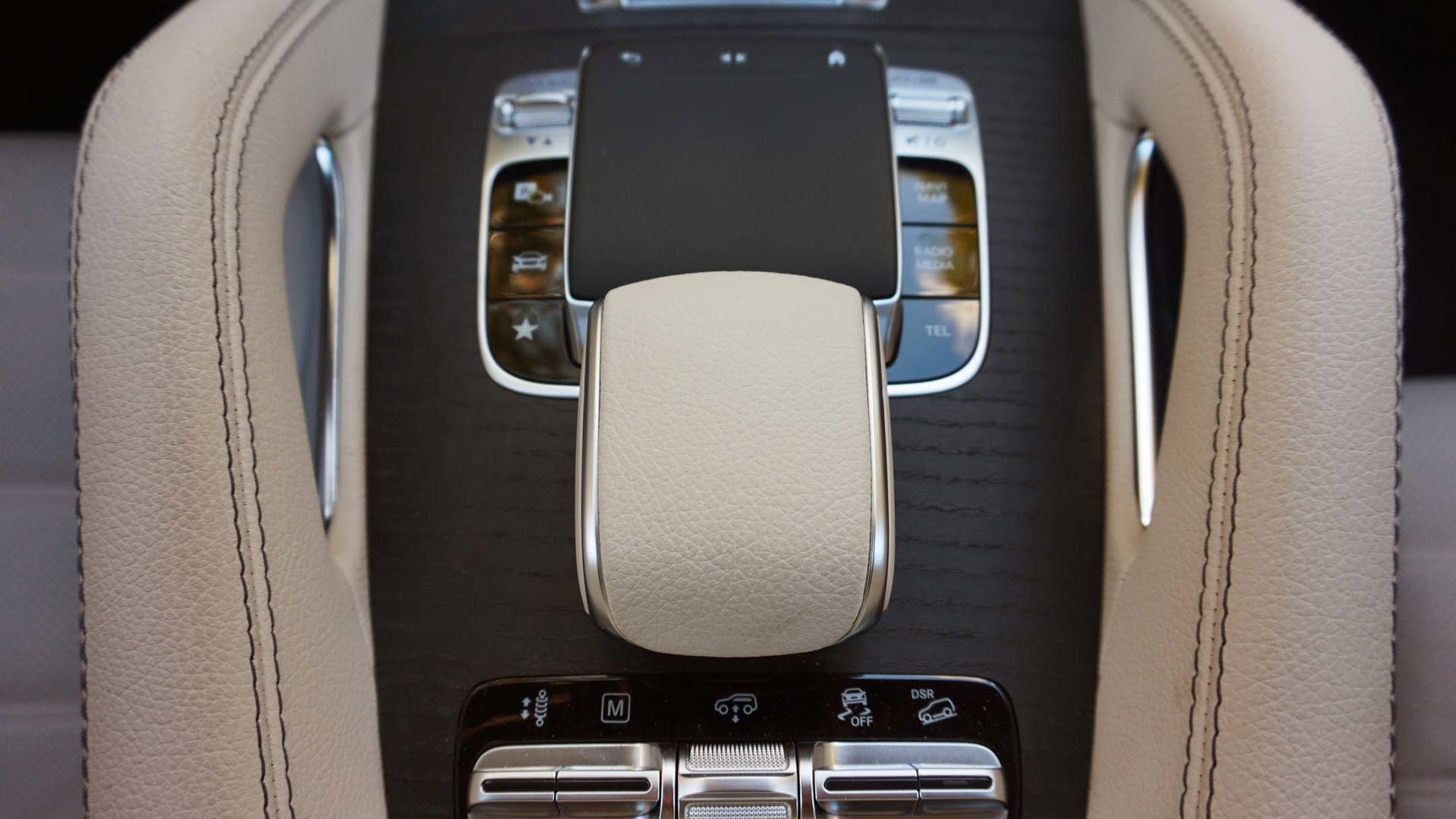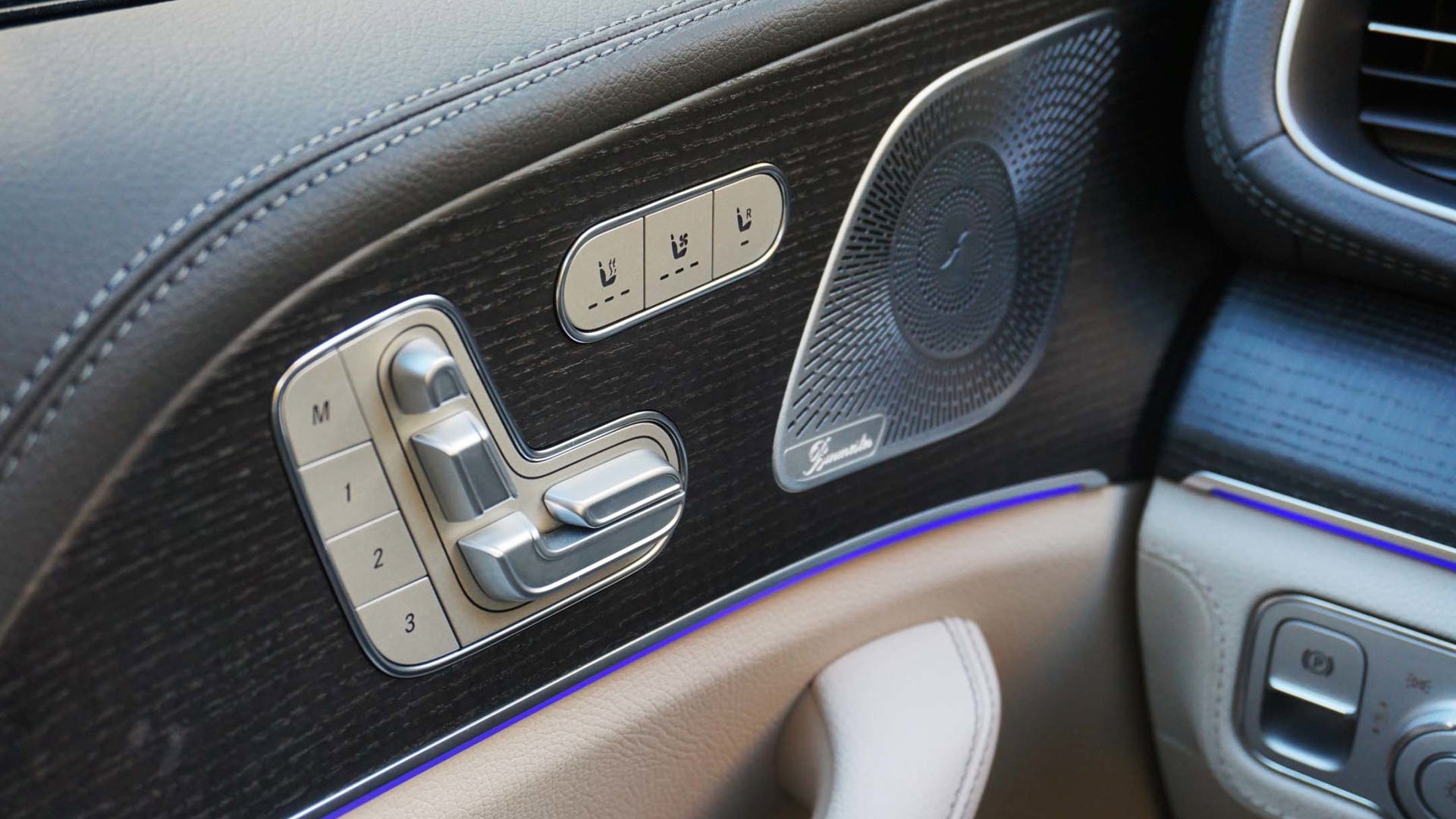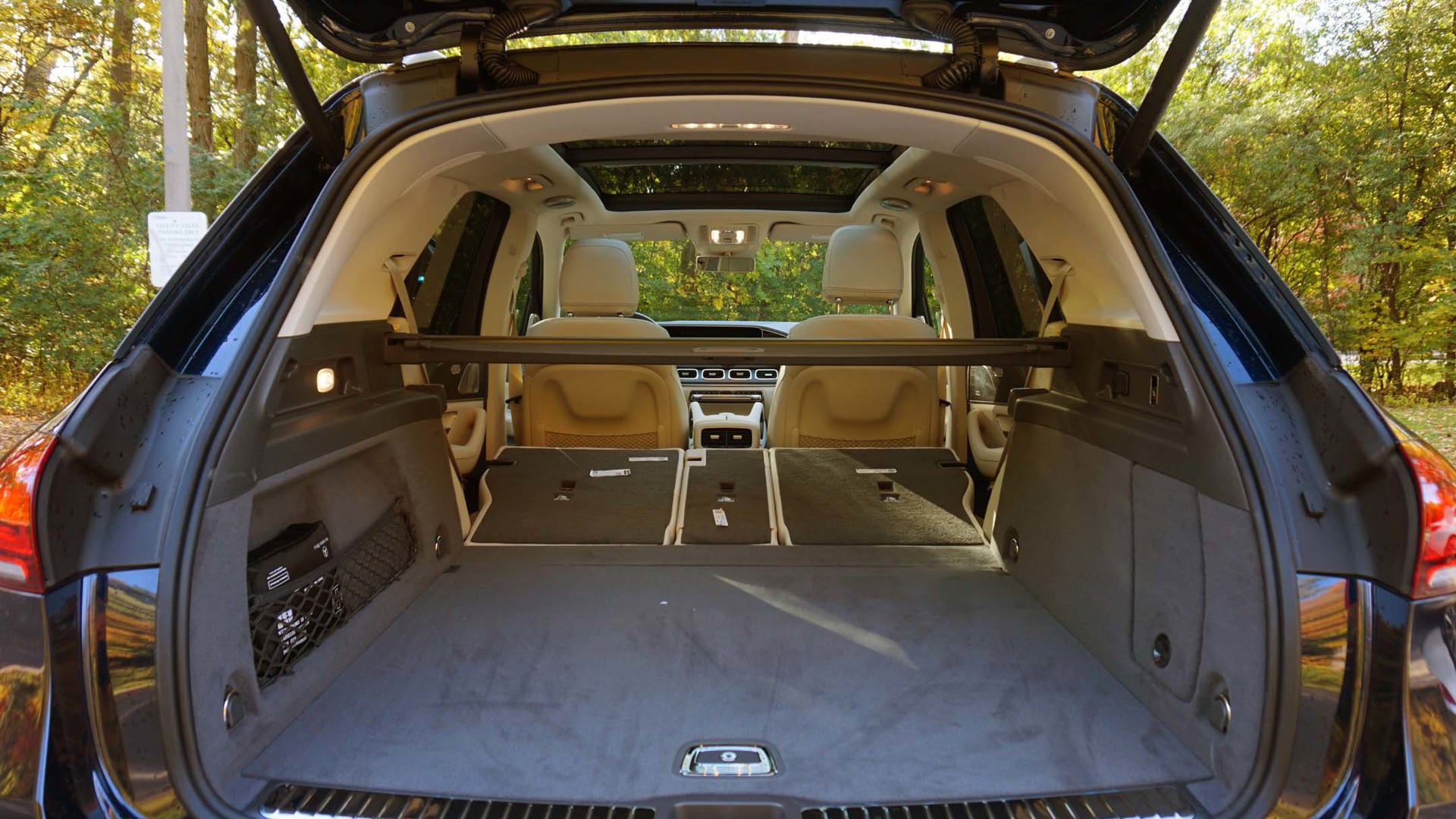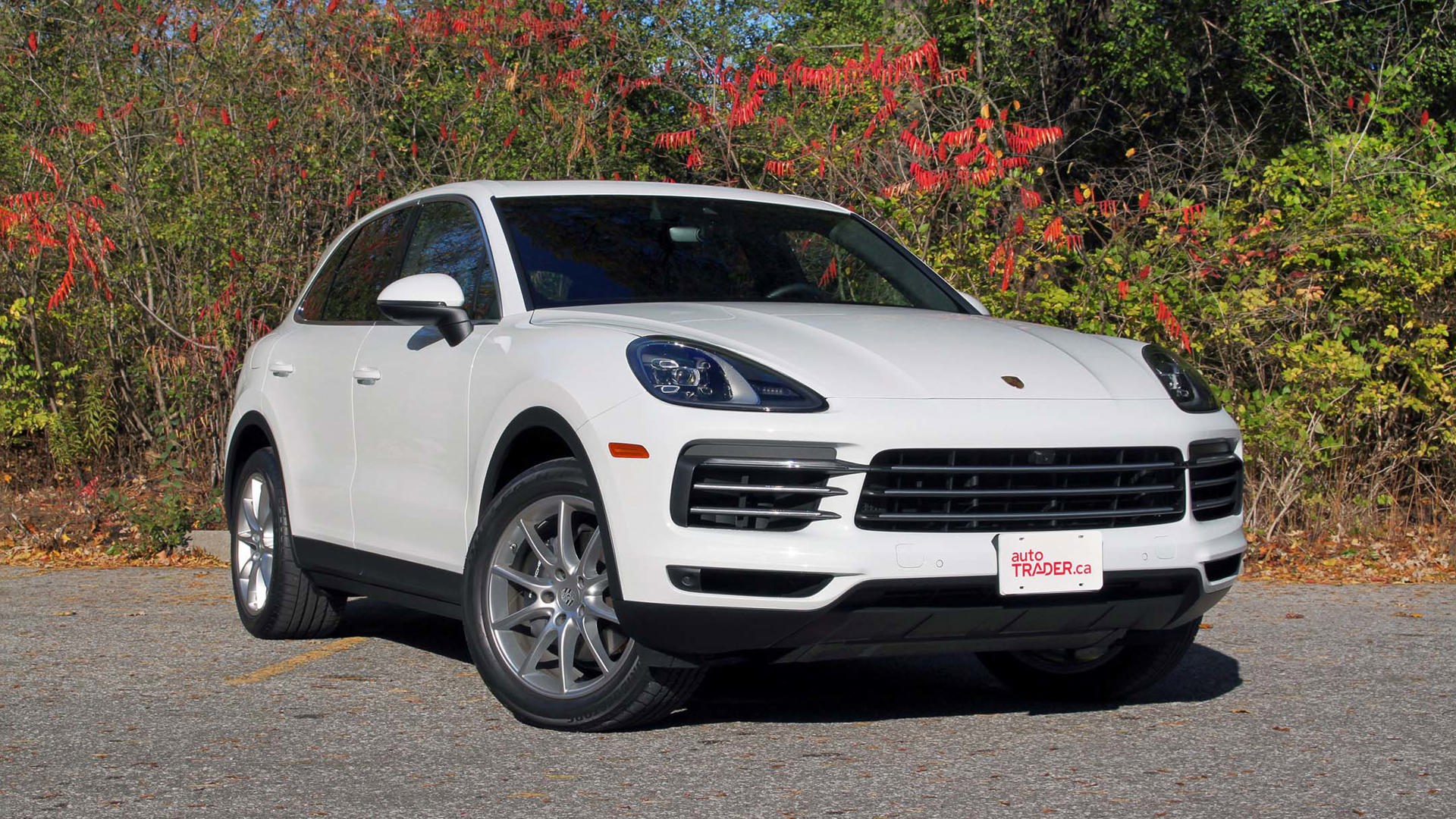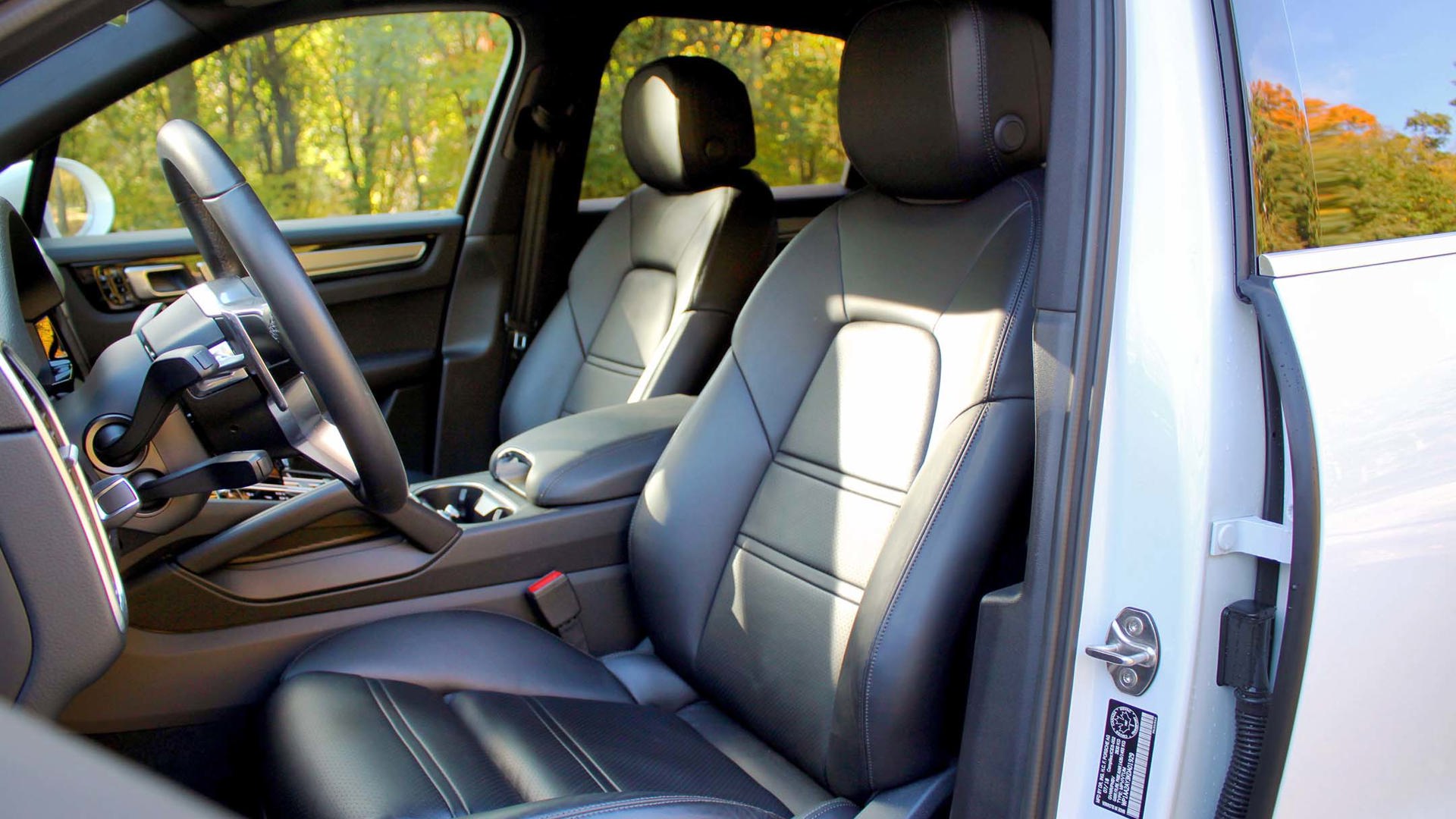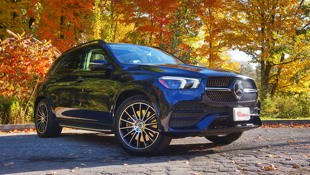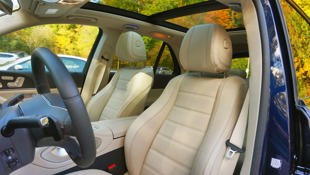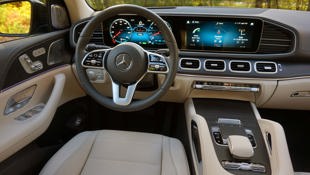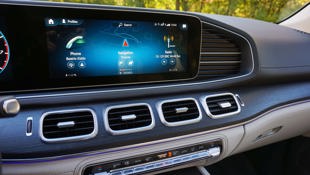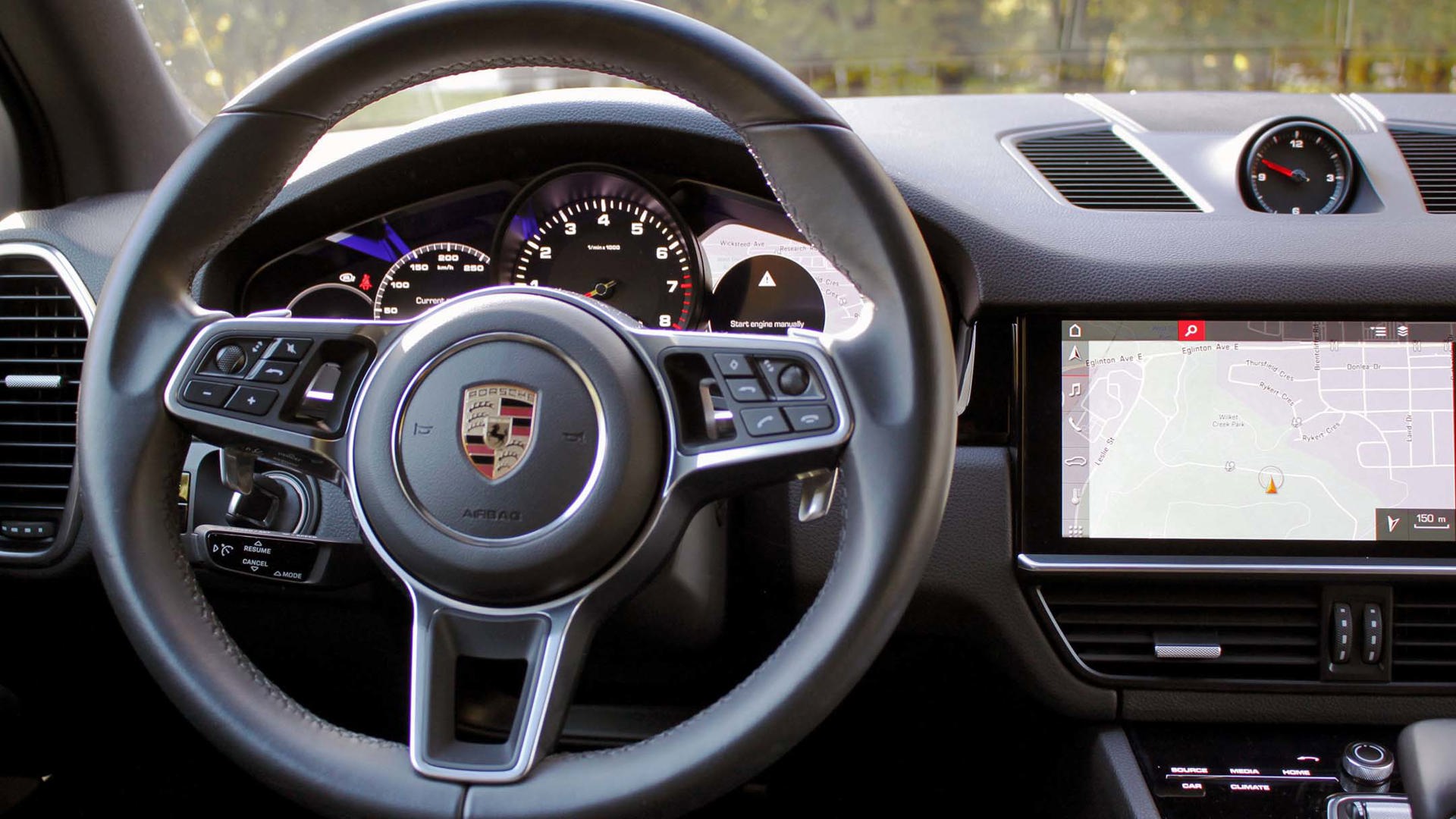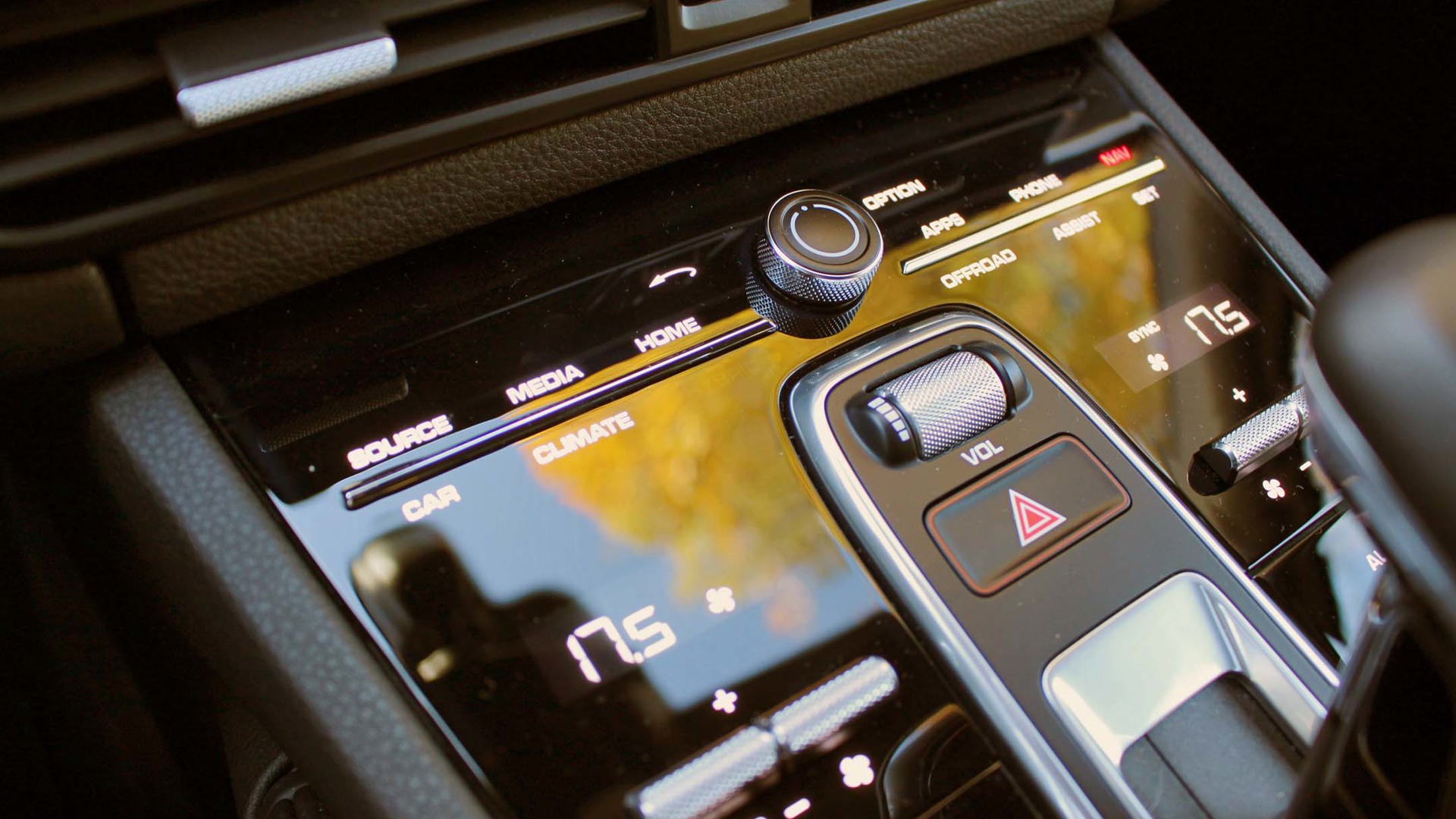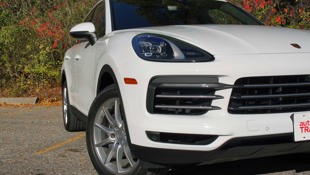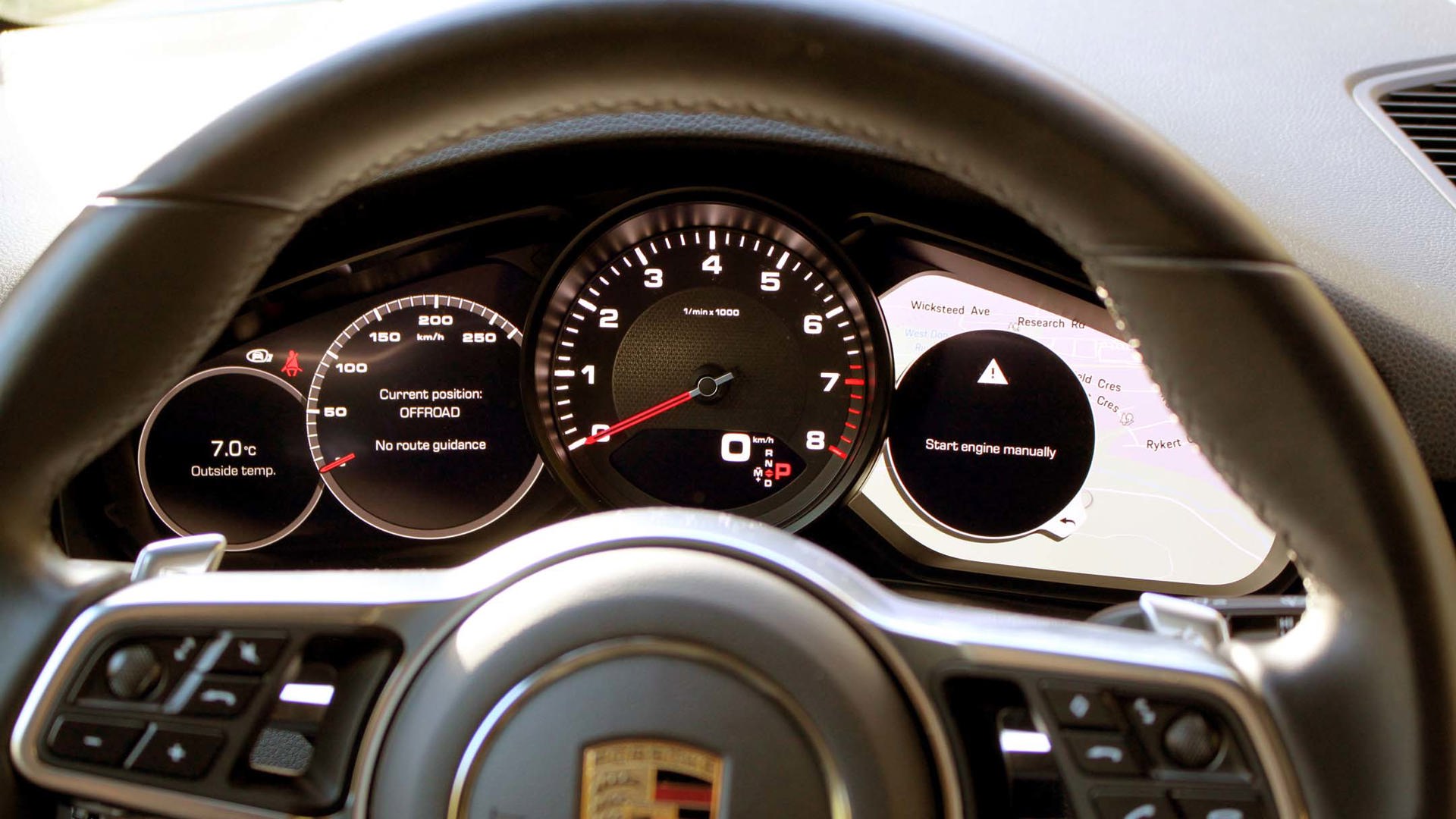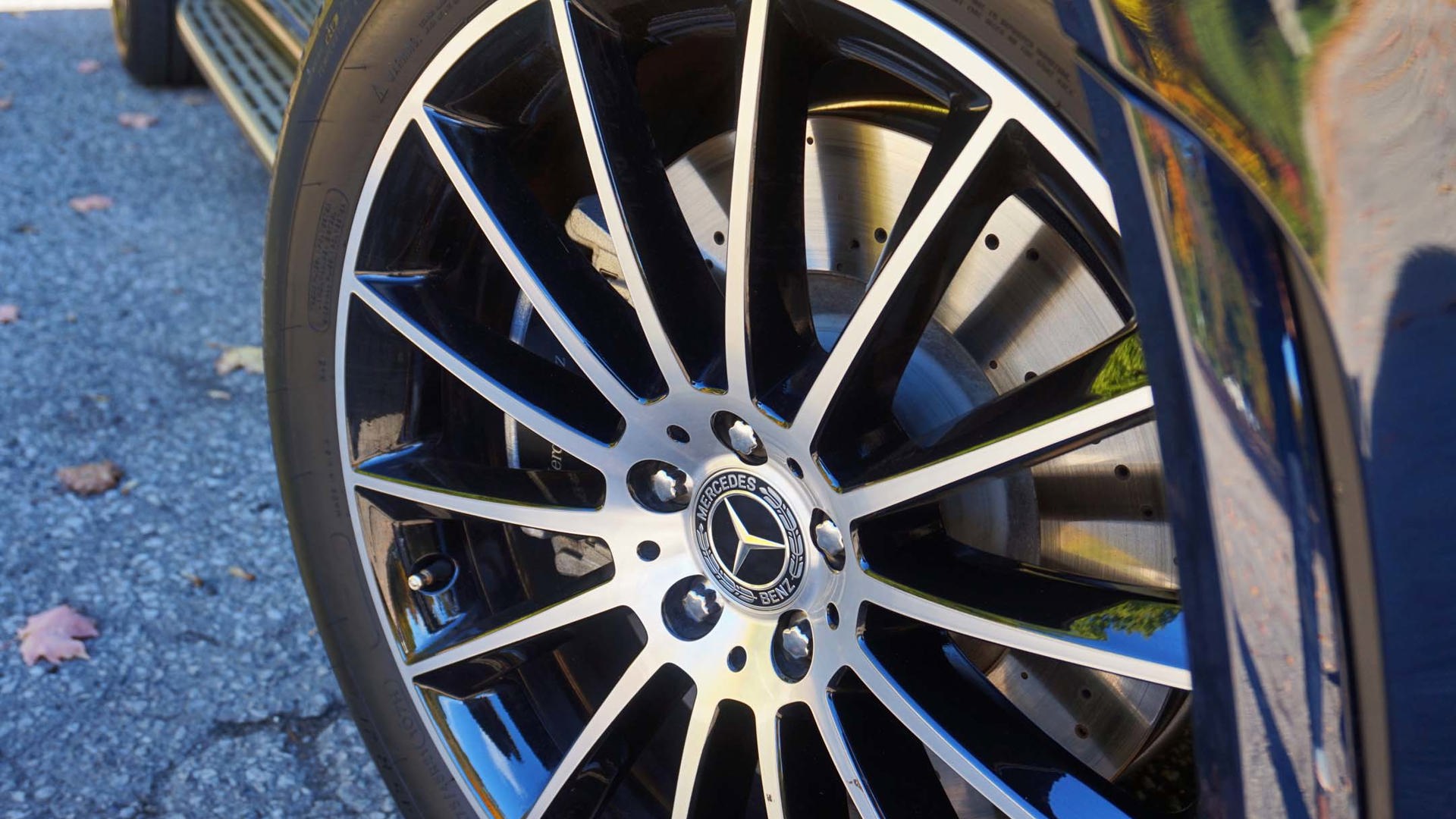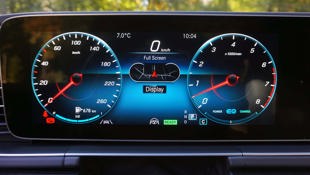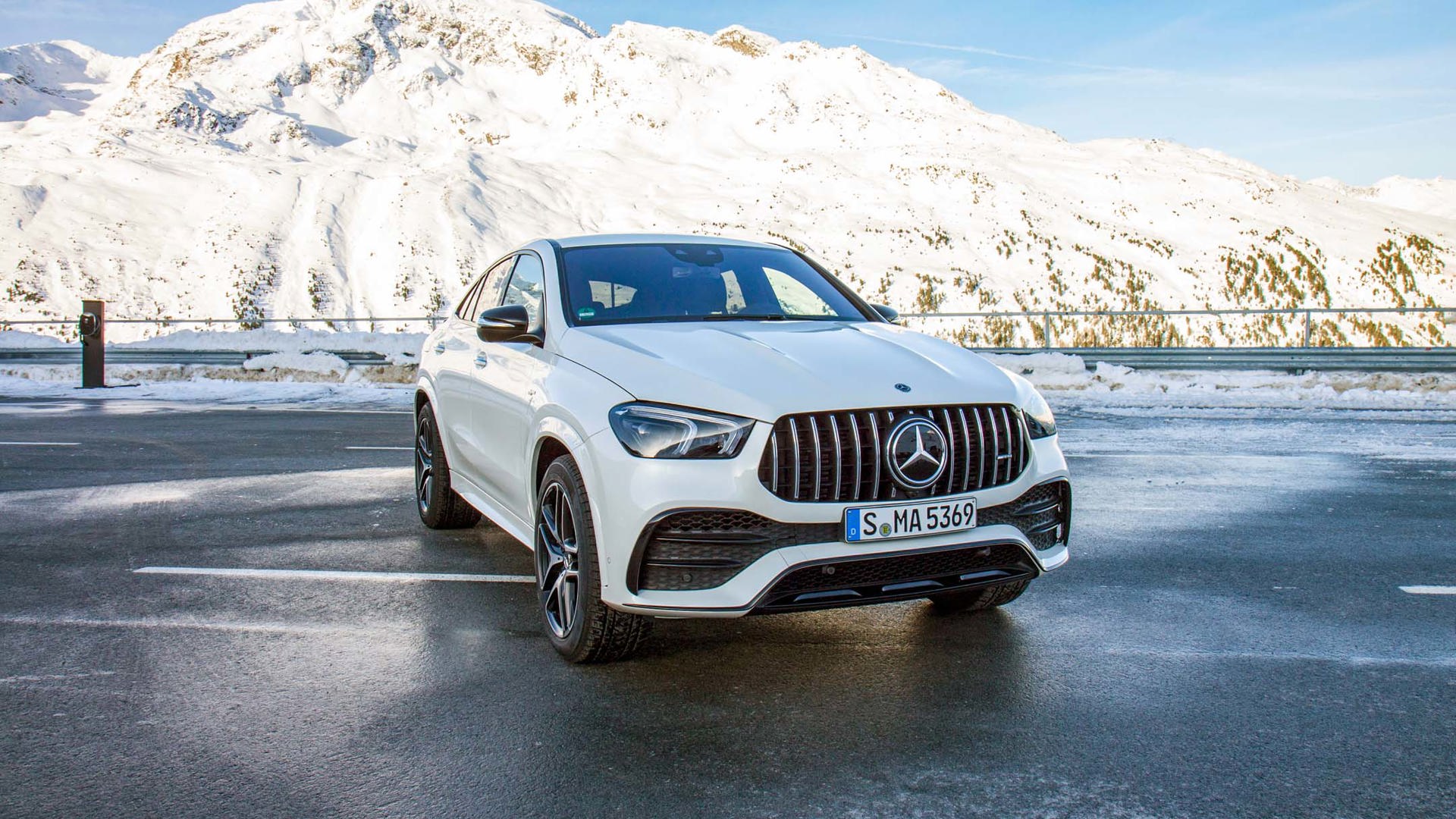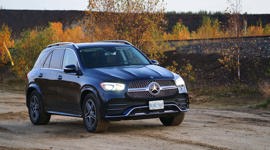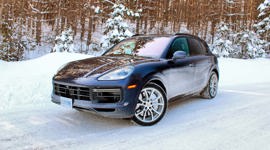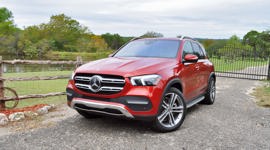Comparison Data
|
2020 Mercedes-Benz GLE 450
|
2019 Porsche Cayenne
|
|---|---|
|
Engine Displacement
3.0L
|
3.0L
|
|
Engine Cylinders
I6
|
V6
|
|
Peak Horsepower
362 hp @ 5,500–6,100 rpm
|
335 hp @ 5,300–6,400 rpm
|
|
Peak Torque
369 lb-ft @ 1,600–4,500 rpm
|
332 lb-ft @ 1,340–5,300 rpm
|
|
Fuel Economy
12.3/9.8/11.2 L/100 km cty/hwy/cmb
|
12.5/10.0/11.4 L/100 km cty/hwy/cmb
|
|
Cargo Space
630 / 2,055 L seats down
|
770 / 1,710 L seats down
|
|
Base Price
$72,000
|
$75,500
|
|
A/C Tax
$100
|
$100
|
|
Destination Fee
$1,910
|
$1,250
|
|
Price as Tested
$108,800
|
$89,030
|
|
Optional Equipment
$34,790
|
$12,180
|
Luxury cars may be expensive, but they’re among the most exciting cars to get into since they offer buyers a sense of exclusivity. The Porsche Cayenne used to be the ideal choice in this segment as it was high-end and exciting to drive but didn’t feel pretentious and boring. However, other brands have noticed this formula and have turned up the heat on Porsche. The Mercedes-Benz GLE-Class is one such SUV with more features than you can imagine and has improved in almost every way, all to offer its buyers that sense of exclusivity and specialness the Cayenne once had.
Exterior Styling
Over time it seems crossovers and SUVs have all adopted a similar profile and shape, so determining which one is more visually distinctive has become a matter of how you view a brand’s design language. Mercedes employs a style that’s smooth and curvy, and for the most part doesn’t look too ostentatious, overwrought, or obnoxious. Through the C-pillar, the automaker also finds a way to call back to the ML-Class, the predecessor to the GLE and one of the first successful luxury SUVs on the market. The design of the lights draws you in and you’ll always spot a Mercedes thanks to its light signature. Does the nose end too abruptly? Some see it as a reference to the AMG GT, but it does look a bit awkward from some angles.
The Cayenne has a high-end aura to it, as it should. Porsche-branded vehicles are designed to feel special, and almost every other vehicle in the German automaker’s lineup can cause a scene, at least in terms of performance. Style-wise this leaves the Cayenne integrating a few 911-inspired cues, you can see them in the headlights and taillights. Is it as eye-catching as the Mercedes? It’s a close call, but I’d lean towards the GLE having a more cohesive and creative design.
Mercedes-Benz GLE 450 Exterior Styling: 8.5/10
Porsche Cayenne Exterior Styling: 8/10
Interior Styling
Step into the two cars and the difference is night and day. This is due to our GLE being equipped with many high-end optional packages, which inflates the price significantly, but the impact is worth it. The Mercedes delivers a high-water mark for the class. The cabin is smartly laid out, the upholstery feels luxurious, the mix of materials is well thought out, and the accents don’t upstage the overall design. Some may see an abundance of screens, but the GLE mixes most of this high-tech wizardry with toggle switches that are easy to use and understand. The only complaint is that the gear selector knob and steering-wheel stalks can feel a bit flimsy.
The Cayenne used to be an ideal choice in this segment if buyers were looking for an interior that felt special without being overwhelming. For the most part, it still follows through with this mission, but it’s looking and feeling a step behind the competition. While the switchgear feels more substantial than the Mercedes, there are more than a few criticisms to bring up. The layout can be improved with better-labelled or more-responsive buttons. The touch buttons on the central console are kind of slick-looking, but in certain lights and angles, you can see the labels for features you don’t have. Some may argue that this is better than dummy buttons, but I’d say it’s an annoying reminder of the features you don’t have. While the gauge cluster in the Cayenne is similar to that found in the 911, it lacks the pizzazz of the GLE’s large digital dashboard. The Cayenne we had wasn’t as lavishly appointed either, but that can be resolved for a cost at the factory.
Mercedes-Benz GLE 450 Interior Styling: 9/10
Porsche Cayenne Interior Styling: 7.5/10
Interior Space and Practicality
They may not have three rows of seating, but these crossovers will likely serve as family haulers, so space and practicality are important aspects to consider. The high-tech GLE offers 630 litres of cargo space in the trunk, which is less spacious than the Cayenne. However, this model comes with a fancy air suspension system that lowers the vehicle to make loading the cargo area easier. It’s handy, but so is the 2,055 L available when you fold the rear seats, a measurement that surpasses what the Cayenne has to offer.
Those rear seats in the GLE are spacious too, and there are all kinds of appointments back there to make life easier, including USB ports and climate-controlled seats. For families, the GLE is by far the better pick of these two. While the Cayenne has 770 litres of cargo room, it has just 1,710 litres of storage when the rear seats are folded, and the rear seats feel far less spacious and accommodating than the GLE. While the Cayenne is still a spacious SUV, it’s just not at the same level as the Mercedes in this regard.
Mercedes-Benz GLE 450 Interior Space and Practicality: 9/10
Porsche Cayenne Interior Space and Practicality: 7.5/10
Features and Technology
In the world of luxury cars, technological advancement happens at an incredible pace. The newest vehicles feel like they’re lifted straight from science fiction – the GLE seems utterly futuristic compared to the Cayenne. Helping to demonstrate the contrast, Mercedes left no option behind on our GLE 450 tester, while the model Porsche sent over had practically no options at all. But let’s focus on what’s important: all of the available fancy features and tech. The Mercedes offers an air-suspension system that is augmented by the vehicle’s 48-volt electric system. This is mostly used for smoothing out the ride, but it gains some impressive off-road capabilities as well, in particular the ability to get itself unstuck from snow and mud by bouncing up and down to shift its weight to gain traction. It’s even more humorous to see the GLE bounce up and down while rolling down the street. But there are more features than this goofy gimmick, as the GLE offers wireless phone charging, a heated steering wheel, heated rear seats, heated and cooled cupholders, massage seats, a head-up display, and an infotainment system with Android Auto and Apple CarPlay. The MBUX infotainment system responds to your voice when you say, “Hey Mercedes” and is a helpful digital assistant that can answer questions and perform certain tasks in the car, like change the HVAC settings. Additionally, the MBUX navigation system has an augmented display that overlays street names and house numbers on a feed of the forward-facing camera.
The Cayenne used to be a leader, with impressive features that could outshine the competition. But now, features like a surround-view camera, panoramic sunroof, heated front and rear seats seem a bit tame compared to an augmented navigation system, heated and cooled cupholders, and a suspension system that bounces around. But Porsche has an options list as long as Merlin’s beard, so there are a few highlights you can add to make a Cayenne epic – for a price. For example, there’s four-zone climate control, fancy LED headlights, a head-up display, rear-axle steering, and even an air suspension. Although the GLE and the Cayenne have a few of the same features, the Mercedes features seem more refined, high-tech, and luxurious.
Mercedes-Benz GLE 450 Features and Technology: 9/10
Porsche Cayenne Features and Technology: 8/10
Powertrain
Under the hood of the Mercedes-Benz GLE 450 is a turbocharged straight-six-cylinder engine that’s been augmented by a 48-volt electrical system that Mercedes calls EQ Boost. This package delivers 362 hp and 369 lb-ft of torque, and that electrical system offers a bump of 184 lb-ft of torque and 21 hp, which is mostly felt at lower speeds. There’s a nine-speed automatic transmission, that shifts gears smoothly enough to be invisible. It takes 5.7 seconds to hit 100 km/h from a standstill, which isn’t too speedy, but more than enough. Several additional drive modes unlock more of the performance potential or off-road capabilities of the GLE, but those come at a cost – namely fuel economy and refinement. That’s a shame since the Mercedes powertrain is among the best in the industry, even the automatic engine stop-start system is incredibly refined.
The Cayenne features a 3.0-litre turbocharged V6 that makes 335 horsepower and 332 lb-ft of torque. While the Cayenne also features a 48-volt electrical system, but it’s used more conservatively than the Mercedes system, specifically only with an optional suspension system, not with the powertrain as Mercedes does. The Cayenne matches its motor with an eight-speed automatic which focuses on speed more than anything else. The Cayenne snaps into gear with a sharpness that can’t be found in the GLE. It can sprint to highway speeds from a standstill in just 5.9 seconds if buyers opt for the Sport Chrono package. The Cayenne has a priority on performance and is responsive in a way that the GLE can’t match. While it isn’t as luxurious or versatile as the Mercedes, buyers of a Porsche want the feeling that only an automaker who has specialized in sports cars for the past fifty years can provide, and the Cayenne satisfies.
Mercedes-Benz GLE 450 Powertrain: 8/10
Porsche Cayenne Powertrain: 8/10
Fuel Economy
On paper, the cars match up pretty nicely in terms of powertrain and fuel economy as well. The GLE is rated at 12.3 L/100 km in the city, 9.8 L/100 km on the highway, and 11.2 L/100 km in combined situations. The Cayenne isn’t far off returning 12.5 L/100 km in the city, 10.0 L/100 km on the highway, and 11.4 L/100 km combined.
It’s not a huge difference – and buyers of luxury cars likely won’t care too much about just how fuel-friendly their large luxury SUVs are.
Mercedes-Benz GLE 450 Fuel Economy: 7/10
Porsche Cayenne Fuel Economy: 7/10
Driving Feel
Without a doubt, the Cayenne is the more performance-oriented of the two SUVs. It’s far more responsive, not just in terms of its throttle feel, but steering and handling as well. There’s a new electric power steering system as well as available rear-wheel steering, which all help to make the Cayenne a sporty-feeling vehicle. It manages transitions and lane changes with surprising agility, feeling far smaller than it is. The rear-wheel steering helps shorten the wheelbase at low speeds, turning in opposition to the front wheels, while at higher speeds, they turn in parallel to the front wheels to lengthen the wheelbase and improve stability. It certainly works, and the Cayenne is confident feeling in just about every circumstance.
That isn’t to say the GLE isn’t confident feeling, it just has light steering and a floaty suspension that never feels engaging. However, like the Cayenne, it has a few tricks up its tires too, especially thanks to that fancy bouncy suspension system. There’s a Curve drive mode, that will dip the car in corners, like a motorcycle rider. This helps to counteract the roll and will prevent motion sickness when hustling through corners. Sadly, the GLE just isn’t as sporty or agile feeling as the Porsche, but it is comfortable. That fancy suspension helps to smooth out the rough roads and imperfections in the asphalt, which is more in line with what luxury SUV buyers would pay extra for.
Mercedes-Benz GLE 450 Driving Feel: 7/10
Porsche Cayenne Driving Feel: 8/10
Safety
The amount of safety equipment offered on these two SUVs is staggering. They both feature adaptive cruise control systems with stop-and-go function, as well as forward collision warning, pedestrian detection, lane-keeping assistance, and parking cameras and sensors for every occasion. As a result, they’re extremely safe vehicles. The 2020 GLE 450 has been awarded a Top Safety Pick Plus rating, the top score a vehicle can net. The Cayenne doesn’t have any results published by the IIHS, so we’re not sure just how it would fare in a crash.
Mercedes-Benz GLE 450 Safety: 8/10
Porsche Cayenne Safety: 7/10
Value
The Cayenne starts at $76,700, and our model featured an as-tested price of $89,030 thanks to the Premium Package, parking sensors, 20-inch wheels and heated seats. The GLE 450 starts at $72,000, but there was no option spared on our tester leading to a total price of $108,800. That’s a pretty big difference, but it is reflected in the experience. The GLE is equipped comes with just about every feature you can think of – including options that make it more stylish, more luxurious, more high-tech, and more of everything. It’s worth the extra cost, if you’re looking for the top choice in the segment, you’ll have to pay for it.
Mercedes-Benz GLE 450 Value: 6/10
Porsche Cayenne Value: 7/10
The Verdict
In the past, the Cayenne was an easy pick in this segment. It was an exclusive car that had the aura of the high-end segment, but things have changed quickly. The GLE is a far more premium car now, with an unbelievable amount of features that are unique to the segment that make it a more luxurious vehicle than its rival. The Cayenne still holds an edge in terms of driving feel, but that’s just all it claims as a victory against the Mercedes. If you want the best, it’ll have a three-pointed star on the front.
